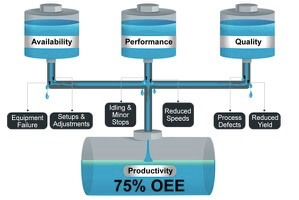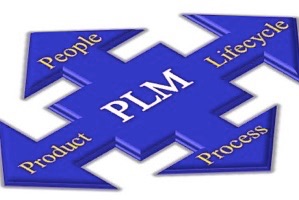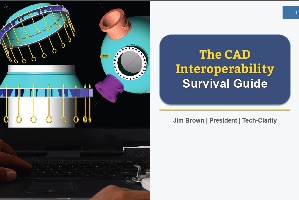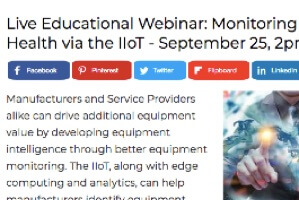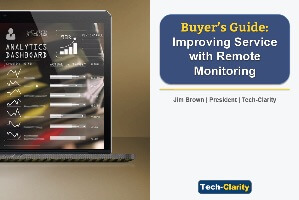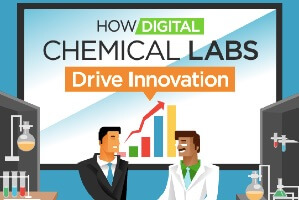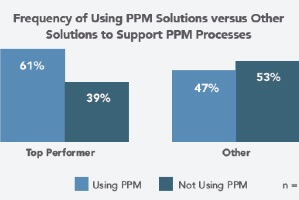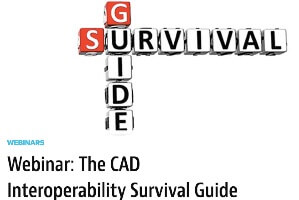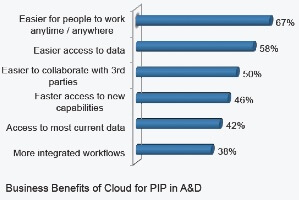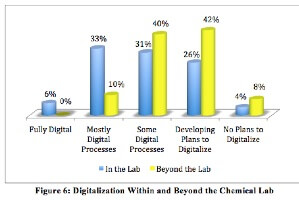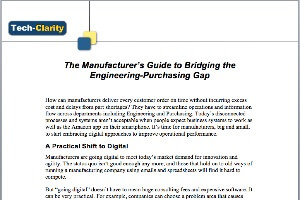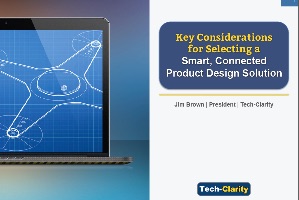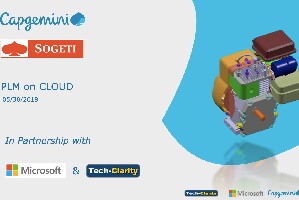How can manufacturers improve OEE with IoT Analytics? How can they leverage IoT and IIoT data to drive higher performance and extend the advantages they’ve gained from Six Sigma and other productivity improvement programs? Improving Manufacturing Performance with IoT Analytics takes a look at how to improve Operational Equipment Effectiveness through digitalization. Specifically, the report…
- What skills Top Performing companies look for in new graduates
- The types of experiences that provide engineering students with the right practical skills
- What your company can do to strengthen the pool of engineering graduates
 [post_title] => Closing the Engineering Skills Gap (webcast)
[post_excerpt] =>
[post_status] => publish
[comment_status] => open
[ping_status] => open
[post_password] =>
[post_name] => engineering_skills_gap
[to_ping] =>
[pinged] =>
[post_modified] => 2022-11-14 22:26:58
[post_modified_gmt] => 2022-11-15 03:26:58
[post_content_filtered] =>
[post_parent] => 0
[guid] => https://tech-clarity.com/?p=7236
[menu_order] => 0
[post_type] => post
[post_mime_type] =>
[comment_count] => 0
[filter] => raw
)
[2] => WP_Post Object
(
[ID] => 7222
[post_author] => 2
[post_date] => 2018-10-22 12:46:31
[post_date_gmt] => 2018-10-22 16:46:31
[post_content] =>
[post_title] => Closing the Engineering Skills Gap (webcast)
[post_excerpt] =>
[post_status] => publish
[comment_status] => open
[ping_status] => open
[post_password] =>
[post_name] => engineering_skills_gap
[to_ping] =>
[pinged] =>
[post_modified] => 2022-11-14 22:26:58
[post_modified_gmt] => 2022-11-15 03:26:58
[post_content_filtered] =>
[post_parent] => 0
[guid] => https://tech-clarity.com/?p=7236
[menu_order] => 0
[post_type] => post
[post_mime_type] =>
[comment_count] => 0
[filter] => raw
)
[2] => WP_Post Object
(
[ID] => 7222
[post_author] => 2
[post_date] => 2018-10-22 12:46:31
[post_date_gmt] => 2018-10-22 16:46:31
[post_content] => 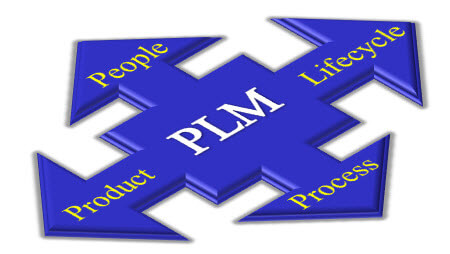 How can manufacturers expand their PLM implementation to get more value from their Product Lifecycle Management system? Join this webcast to hear Jim Brown shares his perspective and research, including interviews with two manufacturers that have gone beyond their initial PLM footprint.
Implementing PLM successfully is more of a journey than a destination. In a recent study, Tech-Clarity interviewed companies using PLM and found 5 Ways businesses are extracting more value from their PLM investment.
Join us on October 30th at 12PM EDT on a Live Webinar where Jim Brown of Tech-Clarity will reveal his findings: 5 Ways to Get More Business Value from your PLM System.
How can manufacturers expand their PLM implementation to get more value from their Product Lifecycle Management system? Join this webcast to hear Jim Brown shares his perspective and research, including interviews with two manufacturers that have gone beyond their initial PLM footprint.
Implementing PLM successfully is more of a journey than a destination. In a recent study, Tech-Clarity interviewed companies using PLM and found 5 Ways businesses are extracting more value from their PLM investment.
Join us on October 30th at 12PM EDT on a Live Webinar where Jim Brown of Tech-Clarity will reveal his findings: 5 Ways to Get More Business Value from your PLM System.
 Learn how to:
Learn how to:
- Reenergize your PLM strategy and implementation plan
- Expand PLM capabilities around product processes
- Identify other functional areas and processes beyond engineering who can benefit from PLM
- Provide better data access and insight for downstream functions
 What do leading industry analysts think about Siemens PLM strategy and execution? Industry analyst Allan Behrens of Taxal hosted a discussion about Siemens PLM with two other analysts, Monica Schnitger of Schnitger Corp and Tech-Clarity's Jim Brown. The Disruptive presentation was a unique glimpse at industry watchers (trying not to call ourselves "experts") sharing our key takeaways from an invitation only analyst and press event. It's always a pleasure to speak with Monica and Allan, and it was great to hear that each of us focus on the business value of the technology as opposed to the technology itself. That was a great fit for the conference, which Siemens organized by business initiative instead of their software product lines (a winning approach, in all of our opinions).
So...
What do leading industry analysts think about Siemens PLM strategy and execution? Industry analyst Allan Behrens of Taxal hosted a discussion about Siemens PLM with two other analysts, Monica Schnitger of Schnitger Corp and Tech-Clarity's Jim Brown. The Disruptive presentation was a unique glimpse at industry watchers (trying not to call ourselves "experts") sharing our key takeaways from an invitation only analyst and press event. It's always a pleasure to speak with Monica and Allan, and it was great to hear that each of us focus on the business value of the technology as opposed to the technology itself. That was a great fit for the conference, which Siemens organized by business initiative instead of their software product lines (a winning approach, in all of our opinions).
So...
- What do we think of the Siemens PLM strategy?
- What were our impressions of how Siemens' views the digital twin?
- What are our views on the way that Siemens is incorporating the technology - and the thought leaders - from their significant acquisitions?
- How do we perceive the integration across the Siemens PLM platform?
- What did we observe about the role Siemens PLM plays in the broader Siemens community?
- What else did Allan want us to chat about?
 Tech-Clarity was commissioned by Planview to conduct their 6th Annual Product Portfolio Management Benchmark Survey, titled The Business Transformation Required to Innovate in the Digital Era. The survey evaluated trends in managing product portfolios including challenges, processes, and technologies used to make portfolio decisions. Tech-Clarity applied our performance banding methodology to determine what Top Performers do differently than others to achieve better production innovation results. This report also includes a new perspective on the impact of the digital transformation and resulting complexity on portfolio management.
Please see the report on Planview's site (no charge, registration required).
You can also view Tech-Clarity's executive summary with some key findings on our site.
[post_title] => Sixth Annual Product Portfolio Management Benchmark Study
[post_excerpt] =>
[post_status] => publish
[comment_status] => open
[ping_status] => open
[post_password] =>
[post_name] => ppm-benchmark-2
[to_ping] =>
[pinged] =>
[post_modified] => 2022-11-14 22:25:54
[post_modified_gmt] => 2022-11-15 03:25:54
[post_content_filtered] =>
[post_parent] => 0
[guid] => https://tech-clarity.com/?p=7203
[menu_order] => 0
[post_type] => post
[post_mime_type] =>
[comment_count] => 0
[filter] => raw
)
[5] => WP_Post Object
(
[ID] => 7190
[post_author] => 2
[post_date] => 2018-10-08 09:32:28
[post_date_gmt] => 2018-10-08 13:32:28
[post_content] =>
Tech-Clarity was commissioned by Planview to conduct their 6th Annual Product Portfolio Management Benchmark Survey, titled The Business Transformation Required to Innovate in the Digital Era. The survey evaluated trends in managing product portfolios including challenges, processes, and technologies used to make portfolio decisions. Tech-Clarity applied our performance banding methodology to determine what Top Performers do differently than others to achieve better production innovation results. This report also includes a new perspective on the impact of the digital transformation and resulting complexity on portfolio management.
Please see the report on Planview's site (no charge, registration required).
You can also view Tech-Clarity's executive summary with some key findings on our site.
[post_title] => Sixth Annual Product Portfolio Management Benchmark Study
[post_excerpt] =>
[post_status] => publish
[comment_status] => open
[ping_status] => open
[post_password] =>
[post_name] => ppm-benchmark-2
[to_ping] =>
[pinged] =>
[post_modified] => 2022-11-14 22:25:54
[post_modified_gmt] => 2022-11-15 03:25:54
[post_content_filtered] =>
[post_parent] => 0
[guid] => https://tech-clarity.com/?p=7203
[menu_order] => 0
[post_type] => post
[post_mime_type] =>
[comment_count] => 0
[filter] => raw
)
[5] => WP_Post Object
(
[ID] => 7190
[post_author] => 2
[post_date] => 2018-10-08 09:32:28
[post_date_gmt] => 2018-10-08 13:32:28
[post_content] => 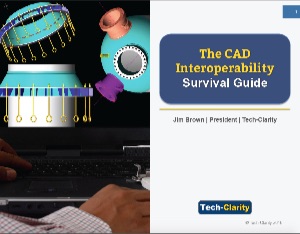 How can manufacturers survive when they can't consolidate on a single CAD format? Is that even a possibility? Given the unavoidable reality of multi-CAD, let's see if there's a better way to manage the mayhem without spending so much non-value-added time. This eBook shares our perspective on the most practical way to manage designs created by different CAD systems. We also share the experience of two manufacturers, Steelcase and KMP Drivetrains, that successfully address this challenge every day based on the realities of their businesses.
Please enjoy the summary below.
For the full report please visit our sponsor, Autodesk (no charge, registration required).
How can manufacturers survive when they can't consolidate on a single CAD format? Is that even a possibility? Given the unavoidable reality of multi-CAD, let's see if there's a better way to manage the mayhem without spending so much non-value-added time. This eBook shares our perspective on the most practical way to manage designs created by different CAD systems. We also share the experience of two manufacturers, Steelcase and KMP Drivetrains, that successfully address this challenge every day based on the realities of their businesses.
Please enjoy the summary below.
For the full report please visit our sponsor, Autodesk (no charge, registration required).
Multi-CAD Mayhem
Does this sound all too familiar?- We spend hours working on suppliers’ designs before we can do any real value-added work
- We waste time re-importing design changes from partners and still have to redo all of our modifications like adding ribs or creating tool paths
- The engineering firm that does our advanced FEA faces the same inefficiencies with our files
- Our industrial designers need features that aren’t supported by our design engineers’ CAD
- We have to rework every design before we send it to the shop floor
- We have years of effort and knowledge in old CAD files so we have to pay for licenses, but we still end up remodeling for the next revision
- We want to move CAD to the cloud, but we’re don’t want to leave our IP behind on the desktop
- We can’t afford to retrain all of the engineers from the company we just acquired and migrate them to our “primary” CAD tool
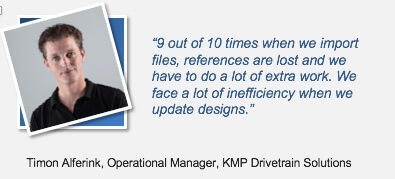 Multi-CAD leads to significant non-value-added work. Given the unavoidable reality of multi-CAD, there should be a better way to manage the mayhem without wasting so much time. Let’s take a look.
Multi-CAD leads to significant non-value-added work. Given the unavoidable reality of multi-CAD, there should be a better way to manage the mayhem without wasting so much time. Let’s take a look.
Evaluating Your Survival Options
You may have ended up in a multi-CAD situation due to legacy CAD files, customer mandates, supply chain realities, internal requirements, or all of the above. Regardless of the reason, this is the way it’s going to be. Now, what are you going to do in order to survive? We explore four options:- Option 1: The Status Quo
- Option 2: Standardize on a Common CAD System
- Option 3: Common, Interoperable CAD Data
- Option 4: Incorporating Non-native CAD with Associativity
Next Steps
Pack Interoperability in your Multi-CAD Survival Kit It’s time to adopt non-native CAD with associativity capabilities to take away the multi-CAD productivity penalty. These capabilities are applicable to many different kinds of scenarios and companies. “For a job shop that machines for others if the customer changes a STEP file and changes a face it would they would need to redo 50% for their CAM program because it lost all of the references, but it would be easy with associative CAD interoperability,” explains KMP Drivetrain Solutions’ Alferink. Interoperability and Productivity go Hand-in-Hand The bottom line is that you should demand this kind of interoperability. It exists. Associative interoperability is the new best practice and state of the art to survive the reality of multi-CAD. “In the end, CAD interoperability drives efficiency. Without it, somebody will make a change a part and it will take much longer because you have to redo a lot of work. Associative CAD interoperability will be more efficient for design changes,” concludes KMP Drivetrain Solutions’ Alferink.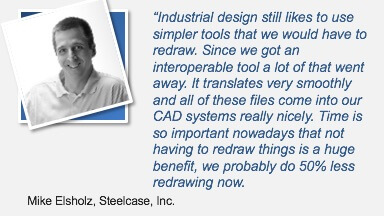 The Business Value of Native CAD with Associativity
Native CAD with associativity allows companies to develop seamless design workflows regardless of format and adapt quickly to changing designs. It allows companies to embrace collaboration with others regardless of their tool of choice. It can also open up your own ability to embrace new CAD solutions (including cloud options) without worrying about leaving your IP behind.
*This summary is an abbreviated version of the report and does not contain the full content. A link to download the full report is available above.
If you have difficulty obtaining a copy of the report, please contact us using the "Contact" link below.
[post_title] => The CAD Interoperability Survival Guide (eBook)
[post_excerpt] =>
[post_status] => publish
[comment_status] => open
[ping_status] => open
[post_password] =>
[post_name] => cad-interoperability
[to_ping] =>
[pinged] =>
[post_modified] => 2022-11-14 22:28:12
[post_modified_gmt] => 2022-11-15 03:28:12
[post_content_filtered] =>
[post_parent] => 0
[guid] => https://tech-clarity.com/?p=7190
[menu_order] => 0
[post_type] => post
[post_mime_type] =>
[comment_count] => 0
[filter] => raw
)
[6] => WP_Post Object
(
[ID] => 7178
[post_author] => 2
[post_date] => 2018-10-01 13:02:12
[post_date_gmt] => 2018-10-01 17:02:12
[post_content] =>
The Business Value of Native CAD with Associativity
Native CAD with associativity allows companies to develop seamless design workflows regardless of format and adapt quickly to changing designs. It allows companies to embrace collaboration with others regardless of their tool of choice. It can also open up your own ability to embrace new CAD solutions (including cloud options) without worrying about leaving your IP behind.
*This summary is an abbreviated version of the report and does not contain the full content. A link to download the full report is available above.
If you have difficulty obtaining a copy of the report, please contact us using the "Contact" link below.
[post_title] => The CAD Interoperability Survival Guide (eBook)
[post_excerpt] =>
[post_status] => publish
[comment_status] => open
[ping_status] => open
[post_password] =>
[post_name] => cad-interoperability
[to_ping] =>
[pinged] =>
[post_modified] => 2022-11-14 22:28:12
[post_modified_gmt] => 2022-11-15 03:28:12
[post_content_filtered] =>
[post_parent] => 0
[guid] => https://tech-clarity.com/?p=7190
[menu_order] => 0
[post_type] => post
[post_mime_type] =>
[comment_count] => 0
[filter] => raw
)
[6] => WP_Post Object
(
[ID] => 7178
[post_author] => 2
[post_date] => 2018-10-01 13:02:12
[post_date_gmt] => 2018-10-01 17:02:12
[post_content] => 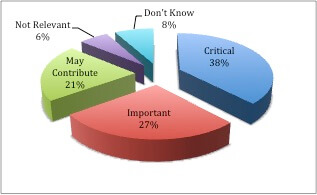 Tech-Clarity research shows that the majority of manufacturers believe that digitalization is important or critical to achieving their business strategy (see figure). Over one-third say that it’s critical. Digitalization in medical device design and manufacturing has significant promise, but what does it actually mean?
Medical device companies, already struggling with how to address critical initiatives like UDI and the Case for Quality, are inundated with information about “digitalization” accompanied with a host of buzzwords including Digital Twins, Digital Threads, and more. How do they really apply to the design, approval, production, and lifecycle management of medical devices? We’ll try to put it into practical terms.
Tech-Clarity research shows that the majority of manufacturers believe that digitalization is important or critical to achieving their business strategy (see figure). Over one-third say that it’s critical. Digitalization in medical device design and manufacturing has significant promise, but what does it actually mean?
Medical device companies, already struggling with how to address critical initiatives like UDI and the Case for Quality, are inundated with information about “digitalization” accompanied with a host of buzzwords including Digital Twins, Digital Threads, and more. How do they really apply to the design, approval, production, and lifecycle management of medical devices? We’ll try to put it into practical terms.
Digital Thread
Let’s start with the digital thread. That’s probably the most straightforward concept and one that provides tangible value. The digital thread, in its simplest definition, is the collection of information used to define, engineer, and develop a product. Ideally it moves beyond the manufacturer into the in-service part of the equipment lifecycle. It offers a view of the digital continuity of the life of the device. The value for medical device companies, in a nutshell, is end-to-end traceability. It’s the connection between everything from patient needs and early requirements through the patient experience, including post market surveillance requirements required by the EU MDR. It provides a broad base of information that allows medical device companies to analyze and learn from history, for example tracking down root causes for a CAPA. The digital thread also clearly supports regulatory requirements related to these needs including the DHF and UDI, including all of the local variants of the regulations. In addition, the digital thread also provides an integrated source of data that can be used to prepare submission documentation. With the digital thread as the trusted data source, medical device companies can automate much of the process to generate these crucial reports.Digital Twin
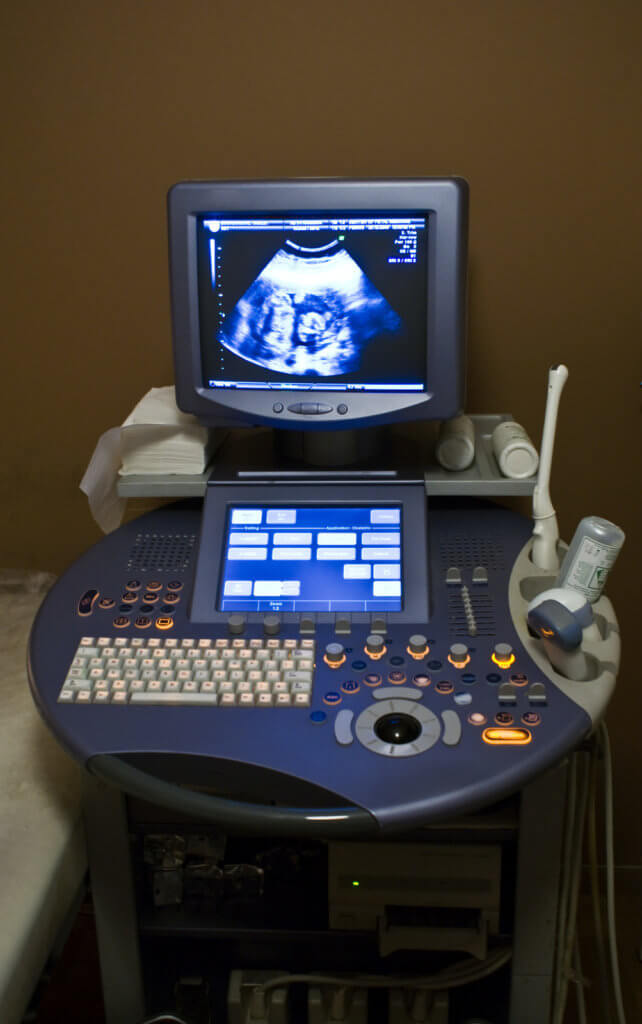 One of the key contributors to the digital thread is the Digital Twin. The digital twin has multiple definitions, but it starts at the core as a complete, digital model of the device. It incorporates a holistic view of the design to a level of granularity that companies can accurately simulate and predict device performance and behavior. There is clear overlap with the digital thread in this part of the definition.
The value of the digital model for medical device companies is a cohesive view of the device. It allows people from various disciplines to contribute their part of the design and see it in the context of the whole product. It allows engineers to analyze and optimize performance early in the product lifecycle, catching errors and improving performance in silica before physical prototypes are developed. As regulatory bodies get more comfortable with simulation data, the digital twin may also play a big part in reducing the length and cost of clinical trials. The digital thread also delivers quality management and regulatory value including the development of the DMR.
One of the key contributors to the digital thread is the Digital Twin. The digital twin has multiple definitions, but it starts at the core as a complete, digital model of the device. It incorporates a holistic view of the design to a level of granularity that companies can accurately simulate and predict device performance and behavior. There is clear overlap with the digital thread in this part of the definition.
The value of the digital model for medical device companies is a cohesive view of the device. It allows people from various disciplines to contribute their part of the design and see it in the context of the whole product. It allows engineers to analyze and optimize performance early in the product lifecycle, catching errors and improving performance in silica before physical prototypes are developed. As regulatory bodies get more comfortable with simulation data, the digital twin may also play a big part in reducing the length and cost of clinical trials. The digital thread also delivers quality management and regulatory value including the development of the DMR.
Connected Digital Twin
The value of the digital twin expands dramatically when it goes beyond device production and into usage. Some would say a digital twin without connectivity isn’t a complete twin, but regardless of definitions a digital model is highly valuable. But a connected one adds significantly greater value. The rise of the IoT adds a new dimension to the value available from the digital twin. Companies can collect real-world device performance and associate it back with the intention of the design model. This can help identify issues where devices are not performing as designed, and may provide an early indicator of a potential variance. A second aspect of the digital twin is identifying differences between predicted and actual device performance where the device is operating as designed, but not as intended. In these cases, there are gaps in the simulated performance of the digital model that can be addressed to improve simulations and understanding of how devices perform in the field. Medical device companies gain significant value from the connected digital twin. It rounds out the information in the DMR and supports a more robust data set for UDI. It could also be used early in the lifecycle to help support clinical trials, as well as other regulatory demands throughout the lifecycle.Digital Twin of the Plant
Another aspect of the digital twin is creating digital twins of the equipment used to produces devices. Companies can create fully functioning models of machines, lines, and plants to design, simulate, and optimize production. As with the digital twin of the product, connecting the digital twin provides even greater value. In this case, it may include the IIoT in addition to the IoT. The digital twin of the plant helps medical device companies validate production methodology, SOPs, and set critical control points to improve control, reduce variability, and improve quality. It can also be used to validate process control intent with regulatory bodies. These twins, along with the digital twin of the device (which should be integrated) can also help automate regulatory submissions. Again, we see significant overlap in the use of digital tools in the medical device industry.Analytics
 The final piece of the puzzle we’ll discuss today is data analytics. Life sciences companies have been using analytics in multiple aspects of their business for quite some time. The digitalization of the underlying information in the design, engineering, manufacturing, and use of the device dramatically expands the opportunities. Companies now have a much broader data set to analyze and transform into intelligence.
Medical device companies can leverage big data analytics in conjunction with the digital twin and digital thread to identify trends and correlations previously hidden in non-digital or non-integrated data sets. Analytics can be used in multiple phases of the device lifecycle, from identifying process control parameters drifting toward spec limits to analyzing adverse event data in the field. This can make existing processes better, for example being able to more quickly identify root causes for CAPAs. It can also support newer requirements like post market surveillance in the EU and the upcoming shift to focusing on patient outcomes. It can also benefit patients, for example predictive analytics may be able to identify potential failures prior to their occurrence and prevent adverse events. Finally, additional insights may create a new source of innovation that leads to new and better treatment options.
The final piece of the puzzle we’ll discuss today is data analytics. Life sciences companies have been using analytics in multiple aspects of their business for quite some time. The digitalization of the underlying information in the design, engineering, manufacturing, and use of the device dramatically expands the opportunities. Companies now have a much broader data set to analyze and transform into intelligence.
Medical device companies can leverage big data analytics in conjunction with the digital twin and digital thread to identify trends and correlations previously hidden in non-digital or non-integrated data sets. Analytics can be used in multiple phases of the device lifecycle, from identifying process control parameters drifting toward spec limits to analyzing adverse event data in the field. This can make existing processes better, for example being able to more quickly identify root causes for CAPAs. It can also support newer requirements like post market surveillance in the EU and the upcoming shift to focusing on patient outcomes. It can also benefit patients, for example predictive analytics may be able to identify potential failures prior to their occurrence and prevent adverse events. Finally, additional insights may create a new source of innovation that leads to new and better treatment options.
IoT
The last area to discuss is the IoT. We’ve already mentioned it while discussing the earlier digital topics, it’s hard not to given it’s significant potential to change the relationship between medical devices, the manufacturer, healthcare professionals, payers, and the patient. But there is much more to this topic, so we’ll save this for a later post.Our Take
Digitalization of the medical device industry takes the value of new technologies and techniques and extends them to improve both company profitability and patient outcomes. In the end, the buzzwords represent new capabilities with real potential to help medical device companies innovate, drive rapid product design, speed approvals, improve quality, and achieve higher levels of compliance. These are all important for them to continue their mission to improve patient welfare in today’s complex healthcare environment. You can find more information about digitalization for medical devices from our sponsor, Siemens PLM. You can also find more information from Tech-Clarity on digitalization in the medical device industry please see our The Digitalization Opportunity for Medical Device Companies (video) or Digitalization in the Medical Device Industry (animation). [post_title] => Translating Digital Buzzwords to Real Value for Medical Devices (post) [post_excerpt] => [post_status] => publish [comment_status] => open [ping_status] => open [post_password] => [post_name] => med-dev-digital-buzz [to_ping] => [pinged] => [post_modified] => 2022-11-14 22:28:28 [post_modified_gmt] => 2022-11-15 03:28:28 [post_content_filtered] => [post_parent] => 0 [guid] => https://tech-clarity.com/?p=7178 [menu_order] => 0 [post_type] => post [post_mime_type] => [comment_count] => 0 [filter] => raw ) [7] => WP_Post Object ( [ID] => 7171 [post_author] => 2 [post_date] => 2018-09-25 10:20:58 [post_date_gmt] => 2018-09-25 14:20:58 [post_content] => How can manufacturers and service providers drive additional productivity and profitability by developing equipment intelligence by monitoring equipment health? Learn how the IIoT, edge computing, and analytics help companies predict and mitigate equipment issues before they disrupt production. Manufacturers can now identify trends and data relationships that previously went undiscovered by combining data from multiple sources with information from sensored equipment, whether they are monitoring their own facilities or products they service at their customers' sites. Watch the Engineering.com webcast replay, sponsored by Siemens (no charge, registration required).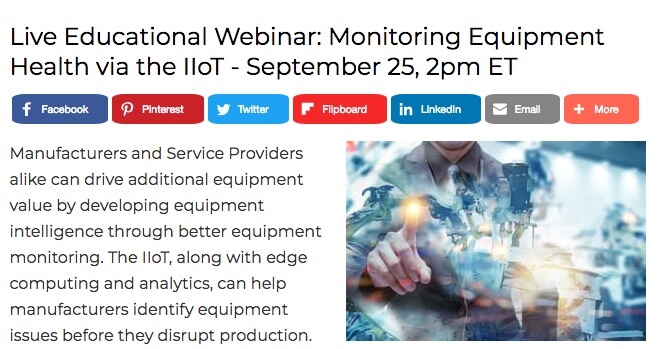 Key takeaways include:
Key takeaways include:
- How manufacturers and service providers are expanding data gathered from equipment, both new and old
- How edge computing and analytics can turn mass volumes of data into actionable intelligence
- How an IIoT platform can help companies more rapidly take advantage of these opportunities
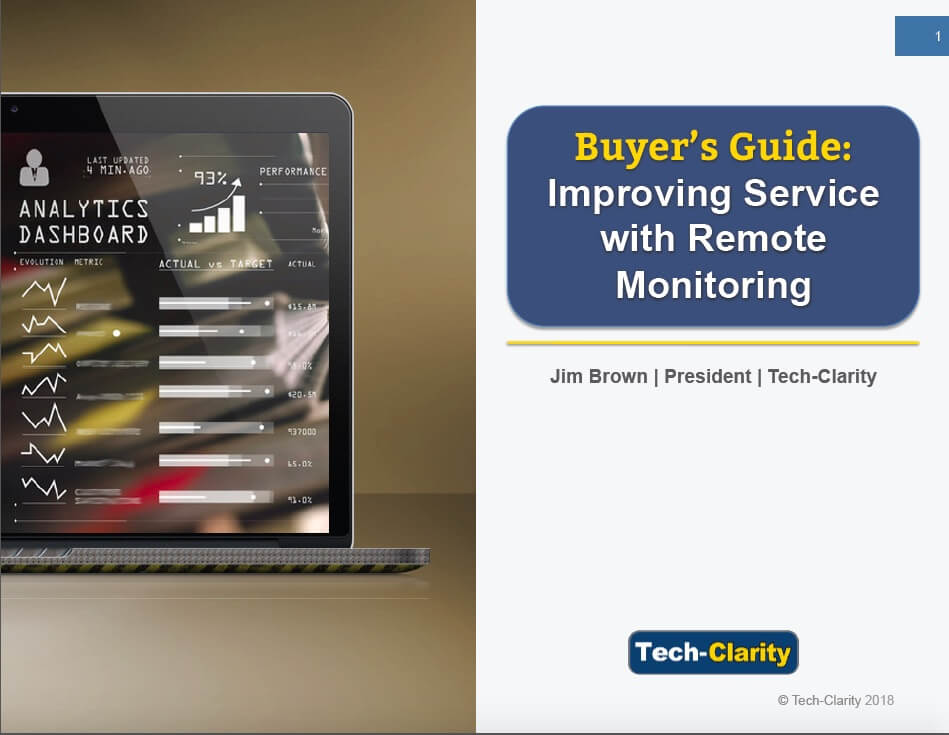 How can companies improve service and gain tangible ROI by remotely monitoring equipment using the IoT? This buyer's guide offers practical advice for companies starting their remote monitoring journey to transform the way they service their equipment whether it's on site, in the field, or at a customer location. At the same time, it offers recommendations to ensure that early projects build a foundation for future machine monitoring and Internet of Things value. As usual, this guide helps companies set functional requirements for their solution, but also addresses implementation, adoption, and partner criteria that help ensure companies get value from their solutions today and well into the future.
Please enjoy the summary below. For the full Buyer's Guide, please visit our sponsor PTC (no charge, registration required).
How can companies improve service and gain tangible ROI by remotely monitoring equipment using the IoT? This buyer's guide offers practical advice for companies starting their remote monitoring journey to transform the way they service their equipment whether it's on site, in the field, or at a customer location. At the same time, it offers recommendations to ensure that early projects build a foundation for future machine monitoring and Internet of Things value. As usual, this guide helps companies set functional requirements for their solution, but also addresses implementation, adoption, and partner criteria that help ensure companies get value from their solutions today and well into the future.
Please enjoy the summary below. For the full Buyer's Guide, please visit our sponsor PTC (no charge, registration required).
Table of Contents
- Improve Service ROI, Build your IoT Foundation for the Future
- Remote Monitoring Drives Service Performance *
- Access Equipment and Equipment Data *
- Communicate with Equipment *
- Leverage the Edge to Pre-Process Communication *
- Share Actionable Service Information *
- Implementation and Adoption *
- Selecting a Strategic Partner *
- Next Steps
- Buyer’s Guide Checklist *
Improve Service ROI, Build your IoT Foundation for the Future
Companies are leveraging the IoT to digitally transform their business and the results are impressive. But many struggle choosing a place to begin. One proven way to get started is by remotely monitoring machines. This initiative allows manufacturers to quickly achieve IoT value while paving the way for even more substantial benefits over time.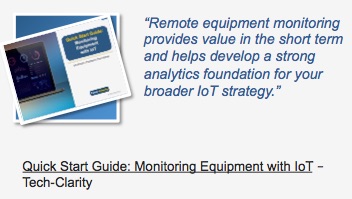 The most common way that companies gain tangible ROI from IoT is through improved service. The IoT lets companies transform service to generate more – and more profitable – service revenue. They do this by moving from reactive to proactive to predictive service, and leveraging advanced technologies like AI, machine learning, and big data analytics. They can also adopt new service delivery processes like remote service. But the most common first step is reducing cost of service through remote monitoring.
This guide briefly shares the tangible, practical first steps companies can take to improve service through IoT remote equipment monitoring and how IoT Platforms help deliver the value. Then, the majority of the buyer’s guide focuses on the important requirements companies must consider to ensure a successful initiative.
The most common way that companies gain tangible ROI from IoT is through improved service. The IoT lets companies transform service to generate more – and more profitable – service revenue. They do this by moving from reactive to proactive to predictive service, and leveraging advanced technologies like AI, machine learning, and big data analytics. They can also adopt new service delivery processes like remote service. But the most common first step is reducing cost of service through remote monitoring.
This guide briefly shares the tangible, practical first steps companies can take to improve service through IoT remote equipment monitoring and how IoT Platforms help deliver the value. Then, the majority of the buyer’s guide focuses on the important requirements companies must consider to ensure a successful initiative.
Next Steps
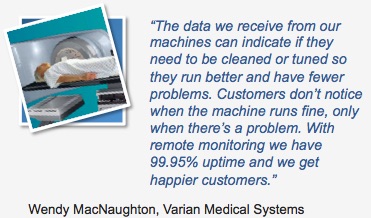 Leveraging the IoT can help companies improve service for themselves and their customers by reducing cost and transitioning to proactive and predictive service. Remote monitoring allows companies to identify and resolve issues remotely, providing faster service and increased uptime for the customer while reducing the cost of truck rolls and putting service technicians on site. It can go beyond cost savings to create a new source of revenue from paid upgrades or remotely enhancing equipment capabilities or permissions by “unlocking” enhanced capabilities via a subscription.
*This summary is an abbreviated version of the report and does not contain the full content. A link to download the full report is available above.
If you have difficulty obtaining a copy of the report, please contact us using the "Contact" link below.
[post_title] => Improving Service with IoT Remote Monitoring (Buyer's Guide)
[post_excerpt] =>
[post_status] => publish
[comment_status] => open
[ping_status] => open
[post_password] =>
[post_name] => iot-monitoring-guide
[to_ping] =>
[pinged] =>
[post_modified] => 2022-11-14 22:27:55
[post_modified_gmt] => 2022-11-15 03:27:55
[post_content_filtered] =>
[post_parent] => 0
[guid] => https://tech-clarity.com/?p=7154
[menu_order] => 0
[post_type] => post
[post_mime_type] =>
[comment_count] => 0
[filter] => raw
)
[9] => WP_Post Object
(
[ID] => 7128
[post_author] => 2
[post_date] => 2018-08-27 09:49:58
[post_date_gmt] => 2018-08-27 13:49:58
[post_content] =>
Leveraging the IoT can help companies improve service for themselves and their customers by reducing cost and transitioning to proactive and predictive service. Remote monitoring allows companies to identify and resolve issues remotely, providing faster service and increased uptime for the customer while reducing the cost of truck rolls and putting service technicians on site. It can go beyond cost savings to create a new source of revenue from paid upgrades or remotely enhancing equipment capabilities or permissions by “unlocking” enhanced capabilities via a subscription.
*This summary is an abbreviated version of the report and does not contain the full content. A link to download the full report is available above.
If you have difficulty obtaining a copy of the report, please contact us using the "Contact" link below.
[post_title] => Improving Service with IoT Remote Monitoring (Buyer's Guide)
[post_excerpt] =>
[post_status] => publish
[comment_status] => open
[ping_status] => open
[post_password] =>
[post_name] => iot-monitoring-guide
[to_ping] =>
[pinged] =>
[post_modified] => 2022-11-14 22:27:55
[post_modified_gmt] => 2022-11-15 03:27:55
[post_content_filtered] =>
[post_parent] => 0
[guid] => https://tech-clarity.com/?p=7154
[menu_order] => 0
[post_type] => post
[post_mime_type] =>
[comment_count] => 0
[filter] => raw
)
[9] => WP_Post Object
(
[ID] => 7128
[post_author] => 2
[post_date] => 2018-08-27 09:49:58
[post_date_gmt] => 2018-08-27 13:49:58
[post_content] => 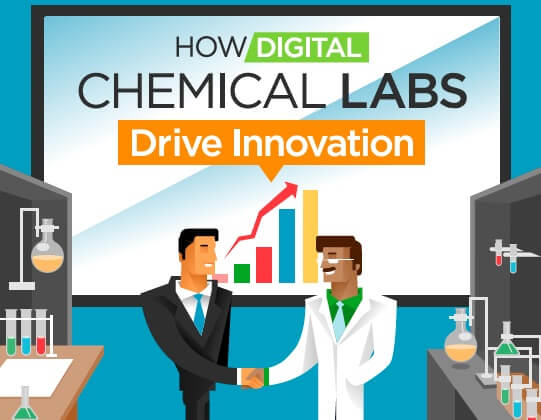 How do Top Performers in the chemical industry leverage digitalization in the chemical lab to overcome their innovation struggles? A Tech-Clarity survey shows that chemical companies face a myriad of innovation-related challenges including cost pressure, sustainability, more customer-driven products, and specialized / performance materials. This infographic provides a graphical snapshot of the research sharing that Top Performers are more than three times more likely to have a fully digital lab than their lesser performing competitors. While few have fully digital labs, the benchmarks show that increased digital maturity in the laboratory leads to better innovation and product development performance.
Please enjoy an excerpt of the infographic below, thanks to our sponsor Dassault Systèmes BIOVIA. For more information on the report, you can read a summary of the underlying research report on our site.
For the full infographic and research report and more information, please visit our sponsor Dassault Systèmes BIOVIA and click on the report or infographic in the Resource Center on the right (no charge, no registration required).
How do Top Performers in the chemical industry leverage digitalization in the chemical lab to overcome their innovation struggles? A Tech-Clarity survey shows that chemical companies face a myriad of innovation-related challenges including cost pressure, sustainability, more customer-driven products, and specialized / performance materials. This infographic provides a graphical snapshot of the research sharing that Top Performers are more than three times more likely to have a fully digital lab than their lesser performing competitors. While few have fully digital labs, the benchmarks show that increased digital maturity in the laboratory leads to better innovation and product development performance.
Please enjoy an excerpt of the infographic below, thanks to our sponsor Dassault Systèmes BIOVIA. For more information on the report, you can read a summary of the underlying research report on our site.
For the full infographic and research report and more information, please visit our sponsor Dassault Systèmes BIOVIA and click on the report or infographic in the Resource Center on the right (no charge, no registration required).
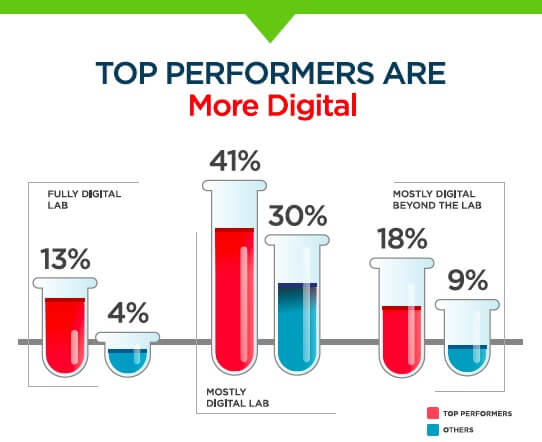 *This summary is an abbreviated version of the report and does not contain the full content. Links to download the full infographic and underlying repport are available above.
If you have difficulty obtaining a copy of the report, please contact us using the "Contact" link below.
[post_title] => How Digital Chemical Labs Drive Innovation (infographic)
[post_excerpt] =>
[post_status] => publish
[comment_status] => open
[ping_status] => open
[post_password] =>
[post_name] => digital-lab-infographic
[to_ping] =>
[pinged] =>
[post_modified] => 2022-11-14 22:26:08
[post_modified_gmt] => 2022-11-15 03:26:08
[post_content_filtered] =>
[post_parent] => 0
[guid] => https://tech-clarity.com/?p=7128
[menu_order] => 0
[post_type] => post
[post_mime_type] =>
[comment_count] => 0
[filter] => raw
)
[10] => WP_Post Object
(
[ID] => 7116
[post_author] => 2
[post_date] => 2018-08-23 10:58:06
[post_date_gmt] => 2018-08-23 14:58:06
[post_content] =>
*This summary is an abbreviated version of the report and does not contain the full content. Links to download the full infographic and underlying repport are available above.
If you have difficulty obtaining a copy of the report, please contact us using the "Contact" link below.
[post_title] => How Digital Chemical Labs Drive Innovation (infographic)
[post_excerpt] =>
[post_status] => publish
[comment_status] => open
[ping_status] => open
[post_password] =>
[post_name] => digital-lab-infographic
[to_ping] =>
[pinged] =>
[post_modified] => 2022-11-14 22:26:08
[post_modified_gmt] => 2022-11-15 03:26:08
[post_content_filtered] =>
[post_parent] => 0
[guid] => https://tech-clarity.com/?p=7128
[menu_order] => 0
[post_type] => post
[post_mime_type] =>
[comment_count] => 0
[filter] => raw
)
[10] => WP_Post Object
(
[ID] => 7116
[post_author] => 2
[post_date] => 2018-08-23 10:58:06
[post_date_gmt] => 2018-08-23 14:58:06
[post_content] => 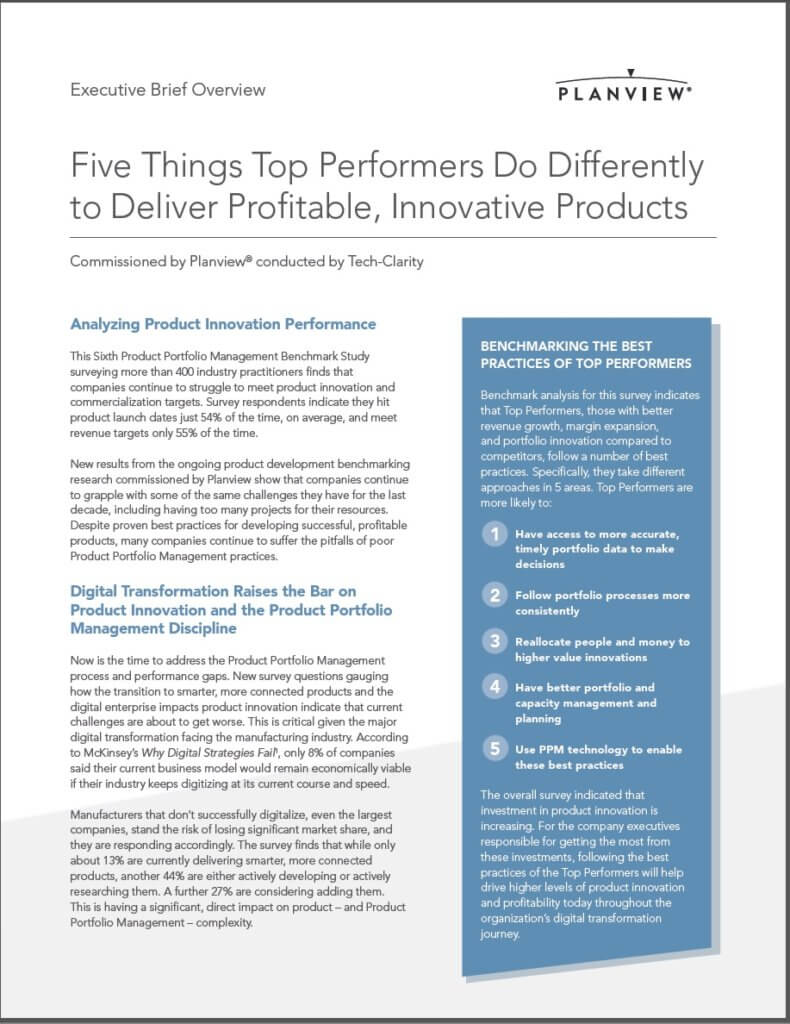 How can companies manage their portfolios and product development processes in order to more reliably hit their product innovation and commercialization challenges? How does digital transformation raise the bar on product portfolio management? Tech-Clarity was commissioned by Planview, Inc. to conduct their Sixth Product Portfolio Management Benchmark Study to find out. The research uncovered five best practices that Top Performers follow more frequently than others, resulting in their higher performance in revenue growth, profit margin expansion, and percent of sales from new products than their competitors. The survey also took a hard look at how digitalization impacts product planning and development, and finds that the transition to smarter, more connected products makes current PPM challenges worse.
How can companies manage their portfolios and product development processes in order to more reliably hit their product innovation and commercialization challenges? How does digital transformation raise the bar on product portfolio management? Tech-Clarity was commissioned by Planview, Inc. to conduct their Sixth Product Portfolio Management Benchmark Study to find out. The research uncovered five best practices that Top Performers follow more frequently than others, resulting in their higher performance in revenue growth, profit margin expansion, and percent of sales from new products than their competitors. The survey also took a hard look at how digitalization impacts product planning and development, and finds that the transition to smarter, more connected products makes current PPM challenges worse.
Analyzing Product Innovation Performance
This Sixth Product Portfolio Management Benchmark Study surveying more than 400 industry practitioners finds that companies continue to struggle to meet product innovation and commercialization targets. Survey respondents indicate they hit product launch dates just 54% of the time, on average, and meet revenue targets only 55% of the time. New results from the ongoing product development benchmarking research commissioned by Planview show that companies continue to grapple with some of the same challenges they have for the last decade, including having too many projects for their resources. Despite proven best practices for developing successful, pr products, many companies continue to suffer the pitfalls of poor Product Portfolio Management practices.Digital Transformation Raises the Bar on Product Innovation and the Product Portfolio Management Discipline
Now is the time to address Product Portfolio Management process and performance gaps. New survey questions gauging how the transition to smarter, more connected products and the digital enterprise impacts product innovation indicate that current challenges are about to get worse. This is critical given the major digital transformation facing the manufacturing industry. According to McKinsey’s Why Digital Strategies Fail, only 8% of companies said their current business model would remain economically viable if their industry keeps digitizing at its current course and speed. Manufacturers that don’t successfully digitalize, even the largest companies, stand the risk of losing market share, and they are responding accordingly about 13% are currently delivering smarter, more connected products, another 44% are either actively developing or actively researching them. A further 27% are considering adding them. This is having a significant, direct impact on product – and Product Portfolio Management – complexity.The Best Practices
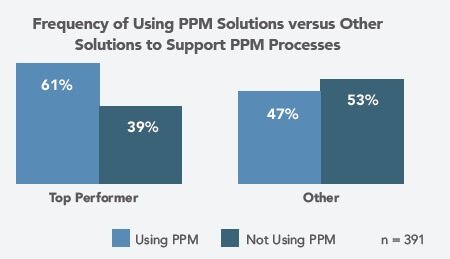 In summary, the best practices identified by the benchmarks research show that Top Performers are more likely to:
In summary, the best practices identified by the benchmarks research show that Top Performers are more likely to:
- Have access to more accurate, timely portfolio data to make decisions
- Follow portfolio processes more consistently
- Reallocate people and money to higher value innovations
- Have better portfolio and capacity management and planning
- Use PPM technology to enable these best practices
Conclusion
Companies continue to miss their product development targets, most notably time to market and related product revenue goals. Too many still fall victim to common Product Portfolio Management challenges, despite the availability of proven best practice processes and technology. Analyzing the Top Performers provides a roadmap that can help other companies overcome challenges and achieve higher levels of innovation and product profitability. Others can learn by example, recognizing that leading companies have better data, follow more consistent processes, are able to reallocate people and money to higher value innovations, and have better control of resource capacity – enabling all of this with the use of PPM software. The time to improve Product Portfolio Management performance is here. As the benchmark study shows, the move toward smarter, more connected products and digitalization will significantly increase product and product development complexity. Product Portfolio Management best practices can improve development of current products and prepare companies for the heightened challenges of digital transformation. PPM technology is positioned to address real challenges and improve value today and throughout the digital transformation. *This summary is an abbreviated version of the Executive Brief and does not contain the full content. A link to download the full research is available above. If you have difficulty obtaining a copy of the report, please contact us using the "Contact" link below. [post_title] => Five Things Top Performers Do Differently to Deliver Profitable, Innovative Products (PPM survey results) [post_excerpt] => [post_status] => publish [comment_status] => open [ping_status] => open [post_password] => [post_name] => ppm-benchmark [to_ping] => [pinged] => [post_modified] => 2022-11-14 22:28:37 [post_modified_gmt] => 2022-11-15 03:28:37 [post_content_filtered] => [post_parent] => 0 [guid] => https://tech-clarity.com/?p=7116 [menu_order] => 0 [post_type] => post [post_mime_type] => [comment_count] => 0 [filter] => raw ) [11] => WP_Post Object ( [ID] => 7107 [post_author] => 2 [post_date] => 2018-08-21 12:30:09 [post_date_gmt] => 2018-08-21 16:30:09 [post_content] => How can engineers be productive and innovate when suppliers, customers, other departments, and even different design teams use a variety of CAD tools? This webcast shares how CAD interoperability helps companies survive when multi-CAD is simply the reality they live with every day. The webinar shares customer stories and best practices from our recent eBook and includes a number of options that companies can consider to help manage the mayhem. In addition, Autodesk will share how their customers leverage associative interoperability of non-native CAD to help make product development more efficient, even when designs inevitably change.
Register for the Machine Design webcast (no charge, registration required).
How can engineers be productive and innovate when suppliers, customers, other departments, and even different design teams use a variety of CAD tools? This webcast shares how CAD interoperability helps companies survive when multi-CAD is simply the reality they live with every day. The webinar shares customer stories and best practices from our recent eBook and includes a number of options that companies can consider to help manage the mayhem. In addition, Autodesk will share how their customers leverage associative interoperability of non-native CAD to help make product development more efficient, even when designs inevitably change.
Register for the Machine Design webcast (no charge, registration required).
Webcast Description
Does this sound all too familiar? Spending hours working on customers designs before we can do any real value-added work. We waste time re-importing design changes from customers and still have to redo all of our modifications like adding ribs or creating tool paths. There is no way we can afford a license for all the different CAD software packages.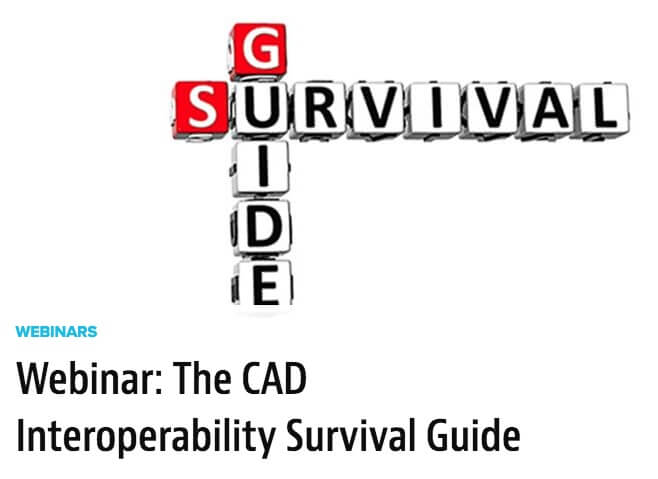 Well if it does, you are not alone. CAD interoperability challenges communicating with customers, suppliers and internally is a real beast and leads to significant non-value added work. In this webinar we will discuss the unavoidable reality of multi-CAD and ways to manage the mayhem without wasting so much time and actually thriving!
In this webinar we will cover:
Well if it does, you are not alone. CAD interoperability challenges communicating with customers, suppliers and internally is a real beast and leads to significant non-value added work. In this webinar we will discuss the unavoidable reality of multi-CAD and ways to manage the mayhem without wasting so much time and actually thriving!
In this webinar we will cover:
- Why multi-CAD impacts productivity and profitability
- How CAD Interoperability allows you to overcome the challenges and work better internally, with customers, and with the supply chain
- What to look for in your CAD solution
 How can Aerospace and Defense companies leverage the cloud to improve innovation, engineering, and manufacturing across the product lifecycle? We surveyed over 250 companies and analyzed the progress, plans, and success factors for supporting product innovation with cloud solutions of over 70 of these companies that serve the A&D industry. The research analyzes both challenges faced and benefits achieved by A&D companies using cloud-based applications. The eBook shares implementation, adoption, operational, and business benefits of cloud systems and how they impact today's digital A&D manufacturer. The report also touches on some specific topics including the use of cloud standards and audits to help mitigate security risk and how cloud platforms enable value-added services in the context of innovation tasks.
Please enjoy the summary below for no charge.
For the full report, please visit our sponsor Dassault Systèmes (no charge, registration required).
You can also watch our Tech-Clarity TV episode sharing the research highlights here.
How can Aerospace and Defense companies leverage the cloud to improve innovation, engineering, and manufacturing across the product lifecycle? We surveyed over 250 companies and analyzed the progress, plans, and success factors for supporting product innovation with cloud solutions of over 70 of these companies that serve the A&D industry. The research analyzes both challenges faced and benefits achieved by A&D companies using cloud-based applications. The eBook shares implementation, adoption, operational, and business benefits of cloud systems and how they impact today's digital A&D manufacturer. The report also touches on some specific topics including the use of cloud standards and audits to help mitigate security risk and how cloud platforms enable value-added services in the context of innovation tasks.
Please enjoy the summary below for no charge.
For the full report, please visit our sponsor Dassault Systèmes (no charge, registration required).
You can also watch our Tech-Clarity TV episode sharing the research highlights here.
Product Innovation Platforms
Before talking about the evolution to the cloud, it’s important to understand how software for product innovation, engineering, and manufacturing has evolved. CAD and other engineering software tools have allowed Aerospace and Defense (A&D) companies to design products that were previously unachievable. They have evolved to model and simulate new materials, advanced manufacturing methods, and multiple aspects of products to more accurately predict behavior. Engineering tools are integrated with data and process management solutions that support products, processes, and programs. These product lifecycle tools have evolved to support a broader view of the product and support a wider range of processes ranging from ideation to certification. Now, the move to the digital enterprise demands more. Software systems must support a more fully integrated approach, enable data-driven design, and support model-based systems engineering. They have to encourage real-time collaboration across disciplines and the supply chain, and support digital continuity where different domains contribute their design perspectives into a comprehensive, cohesive product model. This is the Product Innovation Platform (PIP), which creates a comprehensive digital thread, supports a cohesive digital twin, and breaks the paradigm of disparate, file-based systems. And, it’s moving to the cloud. Given that, we conducted a survey to find out how manufacturers are approaching the cloud opportunity. We gathered over 250 survey responses from manufacturing and engineering services firms, and took a closer look at approximately 70 of them that serve the A&D industry. Let’s take a look!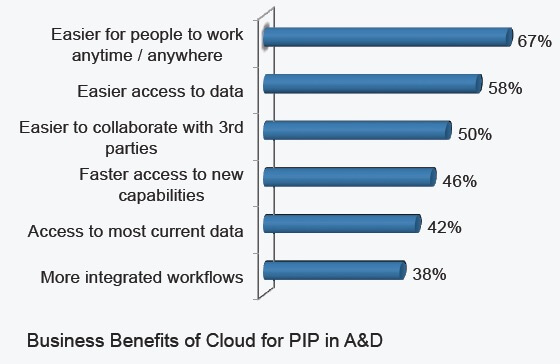 A&D is (Generally) Open to the Cloud
A&D is (Generally) Open to the Cloud
Manufacturers across industries have begun to adopt cloud solutions, and Top Performing manufacturing companies are more open to using cloud solutions, although it’s important to note that this finding is not specific to the Product Innovation Platform. This survey shows that A&D is actually a bit less conservative about the cloud than some might think, at least on a general level. When asked about their company’s strategy or standard for the use of cloud IT solutions, over one-third say they choose the most capable solution, and another 15% favor or use the cloud unless no other software is available. On the other hand, only about one-quarter of A&D companies surveyed say they do not consider or allow cloud.
(more in the full eBook)
A&D has Mixed Views on PIP in the Cloud
Views on the cloud change when related to the PIP. We asked companies about their views on software to support the product lifecycle including CAD, ALM, EDA, CAM, simulation, PDM, PLM, MES / MOM, product analytics, or other related solutions – effectively the components of the PIP. About one-quarter of A&D companies indicate that they use the cloud for some elements of the PIP, and about another one-quarter are implementing, planning to implement, or researching the cloud opportunity. (more in the full eBook)Conclusions and Recommendations
Implementing a cloud solution offers benefits along implementation, operational, and business dimensions. While these cloud-specific benefits are important, it’s important to recognize that most companies rightfully place a higher priority on PIP functionality. A&D companies are not willing to trade off the PIP features that directly impact their success drivers – quality, performance, reliability, innovation. But A&D companies also need to reduce cost. PIP capabilities can deliver on this need, and cloud deployments can further reduce cost even further. Cloud has value, but A&D companies face a number of challenges when implementing it, including security, performance, and availability. These are important concerns that should be addressed through SLAs, standards, and audit procedures. It’s important to understand, though, that in many ways cloud deployments actually help with these aspects by offering shared services with dedicated specialists. The cloud also provides unique opportunities not available with traditional implementations. These include instant scalability, “elastic” computing power, and the valued-added services capability viewed very favorably by survey respondents. A&D has been using the cloud for some time, and are generally open to the cloud, but they’re mixed on the use of cloud for PIP capabilities. This is especially true for suppliers, who are perhaps waiting for the OK from the majority of their OEMs. These views may change with better education about standards and audit processes. Cloud benefits are available, and they’re compelling. Today’s highly capable solutions are bringing the power of mature PIP capabilities with cloud benefits. We expect to see usage continue to grow, although cautiously. *This summary is an abbreviated version of the report and does not contain the full content. A link to download the full report is available above. If you have difficulty obtaining a copy of the report, please contact us using the "Contact" link below. [post_title] => Aerospace and Defense Adopting Cloud Innovation Platforms (survey results) [post_excerpt] => [post_status] => publish [comment_status] => open [ping_status] => open [post_password] => [post_name] => cloud-ad [to_ping] => [pinged] => [post_modified] => 2022-11-14 22:28:49 [post_modified_gmt] => 2022-11-15 03:28:49 [post_content_filtered] => [post_parent] => 0 [guid] => https://tech-clarity.com/?p=7042 [menu_order] => 0 [post_type] => post [post_mime_type] => [comment_count] => 1 [filter] => raw ) [13] => WP_Post Object ( [ID] => 7004 [post_author] => 2 [post_date] => 2018-07-25 09:45:45 [post_date_gmt] => 2018-07-25 13:45:45 [post_content] => [caption id="attachment_7006" align="alignright" width="350"]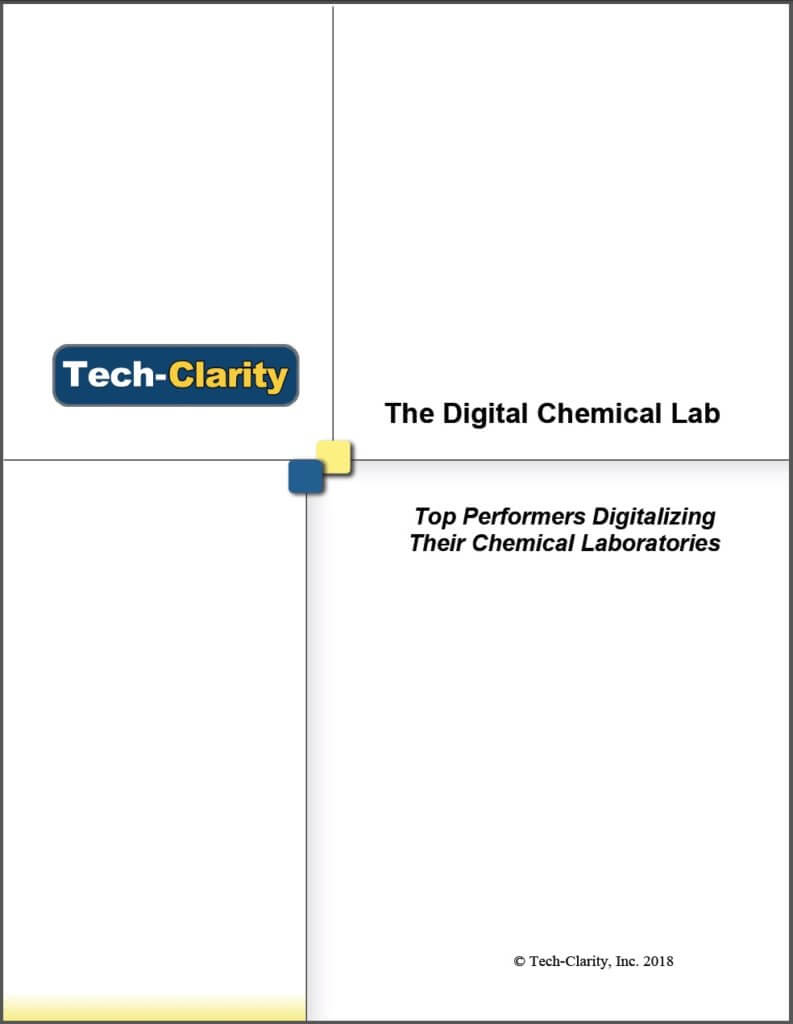 Download a PDF Summary of the Research[/caption]
How can companies improve business results by increasing the digital maturity in their chemical labs? The Digital Chemical Lab, Top Performers Digitalizing Their Chemical Laboratories, shares insights from a survey of over 170 chemical companies examining their lab processes, data, solutions, and digital maturity. The survey benchmarks the level of digitalization against business performance, finding that Top Performers are more likely to employ best practice, digital lab management practices and solutions to drive innovation, agility, and efficiency.
Please enjoy the summary below, or click the report to download a summary of the report (no charge, no registration required).
For the full research and more information including a related infographic, please visit our sponsor Dassault Systèmes BIOVIA and click on the report in the Resource Center on the right (no charge, no registration required).
Download a PDF Summary of the Research[/caption]
How can companies improve business results by increasing the digital maturity in their chemical labs? The Digital Chemical Lab, Top Performers Digitalizing Their Chemical Laboratories, shares insights from a survey of over 170 chemical companies examining their lab processes, data, solutions, and digital maturity. The survey benchmarks the level of digitalization against business performance, finding that Top Performers are more likely to employ best practice, digital lab management practices and solutions to drive innovation, agility, and efficiency.
Please enjoy the summary below, or click the report to download a summary of the report (no charge, no registration required).
For the full research and more information including a related infographic, please visit our sponsor Dassault Systèmes BIOVIA and click on the report in the Resource Center on the right (no charge, no registration required).
Table of Contents
- Executive Overview
- Chemical Companies Face Multiple Business Challenges
- Operational Challenges in the Lab Make Improvement Hard
- Why Digitalize? The Status Quo Won’t Scale
- What’s Driving Chemical Companies Digital?
- Digitalization in the Lab – When, not If
- Digitalization Falters beyond the Lab
- Identifying the Top Performers
- Top Performers Have Better Capabilities for R&D and the Lab
- Top Performers are More Digitalized
- Identifying Best Practices for the Digital Chemical Lab
- Prerequisites for the Digital Chemical Lab
- Digital Chemical Lab Basics
- Digital Best Practices for the Chemical Lab
- Enabling Technology for the Digital Chemical Lab
- Enabling the Digital Chemical Lab with a Solution Platform
- Conclusion
- Recommendations
- About the Author
- About the Research
- Executive Overview
- Most chemical companies have started to adopt digitalization
- Digital transformation is further along in the lab than beyond the lab
- Chemical companies report varied levels of digital maturity
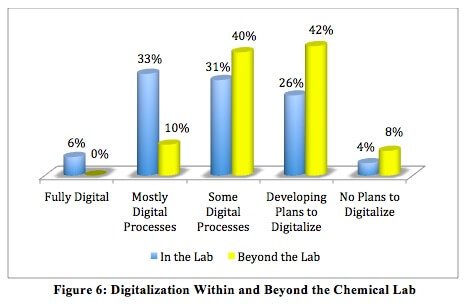 We identified the industry’s Top Performers, those with better revenue growth, margin expansion, innovation, and time-to-market performance, to understand their digital practices. We found that these leaders exhibit higher digital maturity than other companies, particularly in more advanced capabilities like chemical simulation and knowledge management. They also report much better operational capabilities in the lab. How do Top Performers reach these higher levels of performance? Top Performers:
We identified the industry’s Top Performers, those with better revenue growth, margin expansion, innovation, and time-to-market performance, to understand their digital practices. We found that these leaders exhibit higher digital maturity than other companies, particularly in more advanced capabilities like chemical simulation and knowledge management. They also report much better operational capabilities in the lab. How do Top Performers reach these higher levels of performance? Top Performers:
- Are more digital in the chemical laboratory
- Have invested in more digital lab best practices
- Use more specialty scientific software
- Value a platform approach to integrate and support the digital enterprise
Conclusion
Chemical companies are challenged to improve their innovation and product development performance while controlling cost. They face significant operational issues that make these business improvements hard to achieve. Digitalization holds significant promise to address these issues and improve performance because it’s proven to accelerate the pace of innovation, increase agility, and improve efficiency. The transition to the digital chemical lab has begun. Today, however, most chemical companies have only partially digitalized. Top Performers, though, have greater digital maturity than their lesser-performing competitors. They’ve adopted more digital R&D and lab capabilities, particularly when you look beyond the basics to best practices. Top Performers have implemented more specialized R&D and lab management systems to support their best practice processes. Based on the survey results, we believe that these capabilities help the Top Performers achieve better operational R&D and laboratory performance and drive better business performance. Our overall conclusion is that digital best practice processes and chemical laboratory management solutions provide a competitive advantage that helps chemical companies drive higher levels of innovation and profitable growth. Finally, we believe that digitalization will lead to significant market disruption across the chemical industries and result in a significant change in market leadership. Digital transformation supported by best practices and a platform of integrated R&D and laboratory solutions will be a key differentiator to enable the future Top Performers that will lead the industry. The time to digitally transform the chemical laboratory is now.Recommendations
Based on industry experience and research for this report, Tech-Clarity offers the following recommendations. Chemical companies should:- Ensure the digital chemical lab prerequisites and basics are in place
- Pursue digital laboratory best practices including reuse, simulation, and knowledge management to differentiate and drive higher levels of innovation
- Leverage specialized laboratory and R&D software to drive better business performance
- Pursue a chemical laboratory systems platform strategy to further improve performance and gain a market advantage
Copyright Notice
Unauthorized use and/or duplication of this material without express and written permission from Tech-Clarity, Inc. is strictly prohibited. This report is licensed for distribution by Dassault Systèmes BIOVIA. *This summary is an abbreviated version of the report and does not contain the full content. A link to download the full report is available above. If you have difficulty obtaining a copy of the report, please contact us using the "Contact" link below. [post_title] => The Digital Chemical Lab (survey results, white paper) [post_excerpt] => [post_status] => publish [comment_status] => open [ping_status] => open [post_password] => [post_name] => digital-chem [to_ping] => [pinged] => [post_modified] => 2022-11-14 22:28:36 [post_modified_gmt] => 2022-11-15 03:28:36 [post_content_filtered] => [post_parent] => 0 [guid] => https://tech-clarity.com/?p=7004 [menu_order] => 0 [post_type] => post [post_mime_type] => [comment_count] => 0 [filter] => raw ) [14] => WP_Post Object ( [ID] => 6989 [post_author] => 2 [post_date] => 2018-06-18 14:39:59 [post_date_gmt] => 2018-06-18 18:39:59 [post_content] => How do top performing companies plan and deliver profitable portfolios of smarter, more connected products? Join this webcast to hear what recent survey results tell us about developing innovative products in the digital age. The webcast includes results from the 6th Product Portfolio Management Benchmark study, conducted by Tech-Clarity and sponsored by Planview.
Hear Tech-Clarity's Jim Brown and Planview's Carrie Nauyalis share their insights about best practices to find out some surprising things that companies that deliver more innovative, profitable product portfolios than their competitors do differently.
Register for the Planview sponsored webcast now (no charge, registration required).
[post_title] => Secrets to Delivering Smart, Connected Product Portfolios (webcast)
[post_excerpt] =>
[post_status] => publish
[comment_status] => open
[ping_status] => open
[post_password] =>
[post_name] => smart-portfolios-webcast
[to_ping] =>
[pinged] =>
[post_modified] => 2022-11-14 22:26:57
[post_modified_gmt] => 2022-11-15 03:26:57
[post_content_filtered] =>
[post_parent] => 0
[guid] => https://tech-clarity.com/?p=6989
[menu_order] => 0
[post_type] => post
[post_mime_type] =>
[comment_count] => 0
[filter] => raw
)
[15] => WP_Post Object
(
[ID] => 6980
[post_author] => 2
[post_date] => 2018-06-11 14:28:51
[post_date_gmt] => 2018-06-11 18:28:51
[post_content] => How can manufacturers bridge the knowledge gap between design and procurement? The Manufacturer's Guide to Bridging the Engineering-Purchasing Gap shares our perspective on how manufacturers can take a digital approach to sharing critical BOM data from Engineering with Purchasing so they can reduce cost, improve efficiency, and prevent late shipments due to part shortages.
Please enjoy the article below, or click the title to download the full PDF (no charge, no registration required).
For more information on closing the Engineering-Purchasing gap, please visit our sponsor OpenBOM.
How do top performing companies plan and deliver profitable portfolios of smarter, more connected products? Join this webcast to hear what recent survey results tell us about developing innovative products in the digital age. The webcast includes results from the 6th Product Portfolio Management Benchmark study, conducted by Tech-Clarity and sponsored by Planview.
Hear Tech-Clarity's Jim Brown and Planview's Carrie Nauyalis share their insights about best practices to find out some surprising things that companies that deliver more innovative, profitable product portfolios than their competitors do differently.
Register for the Planview sponsored webcast now (no charge, registration required).
[post_title] => Secrets to Delivering Smart, Connected Product Portfolios (webcast)
[post_excerpt] =>
[post_status] => publish
[comment_status] => open
[ping_status] => open
[post_password] =>
[post_name] => smart-portfolios-webcast
[to_ping] =>
[pinged] =>
[post_modified] => 2022-11-14 22:26:57
[post_modified_gmt] => 2022-11-15 03:26:57
[post_content_filtered] =>
[post_parent] => 0
[guid] => https://tech-clarity.com/?p=6989
[menu_order] => 0
[post_type] => post
[post_mime_type] =>
[comment_count] => 0
[filter] => raw
)
[15] => WP_Post Object
(
[ID] => 6980
[post_author] => 2
[post_date] => 2018-06-11 14:28:51
[post_date_gmt] => 2018-06-11 18:28:51
[post_content] => How can manufacturers bridge the knowledge gap between design and procurement? The Manufacturer's Guide to Bridging the Engineering-Purchasing Gap shares our perspective on how manufacturers can take a digital approach to sharing critical BOM data from Engineering with Purchasing so they can reduce cost, improve efficiency, and prevent late shipments due to part shortages.
Please enjoy the article below, or click the title to download the full PDF (no charge, no registration required).
For more information on closing the Engineering-Purchasing gap, please visit our sponsor OpenBOM.
The Manufacturer's Guide to Bridging the Engineering-Purchasing Gap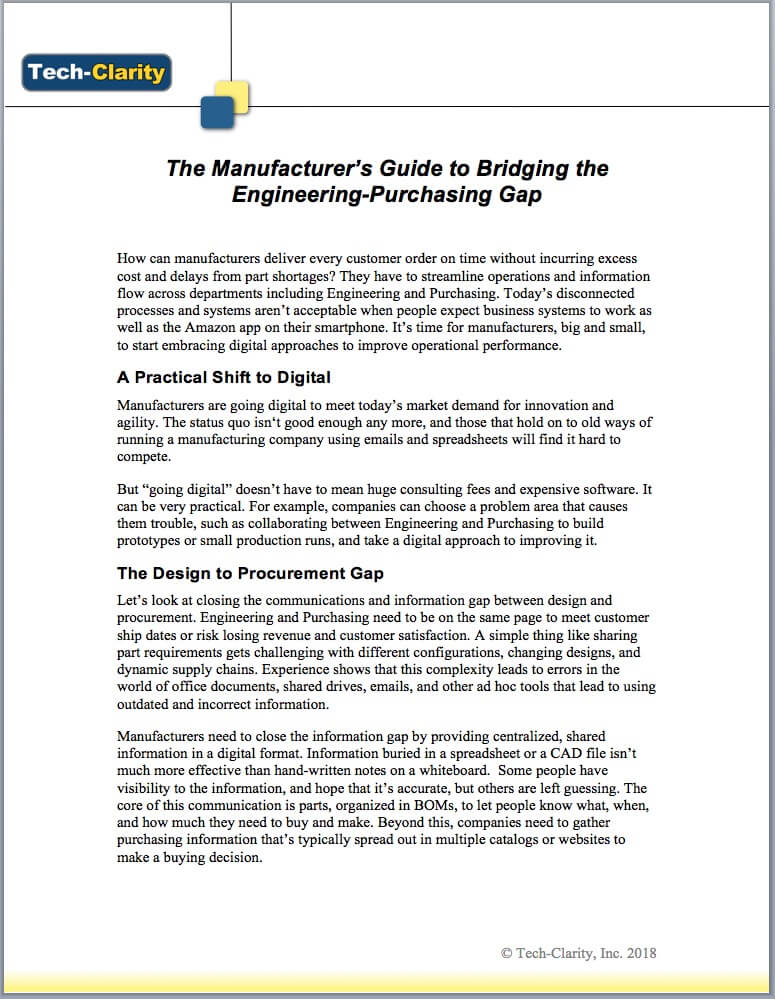
How can manufacturers deliver every customer order on time without incurring excess cost and delays from part shortages? They have to streamline operations and information flow across departments including Engineering and Purchasing. Today’s disconnected processes and systems aren’t acceptable when people expect business systems to work as well as the Amazon app on their smartphone. It’s time for manufacturers, big and small, to start embracing digital approaches to improve operational performance.
A Practical Shift to Digital
Manufacturers are going digital to meet today’s market demand for innovation and agility. The status quo isn‘t good enough any more, and those that hold on to old ways of running a manufacturing company using emails and spreadsheets will find it hard to compete. But “going digital” doesn’t have to mean huge consulting fees and expensive software. It can be very practical. For example, companies can choose a problem area that causes them trouble, such as collaborating between Engineering and Purchasing to build prototypes or small production runs, and take a digital approach to improving it.The Design to Procurement Gap
Let’s look at closing the communications and information gap between design and procurement. Engineering and Purchasing need to be on the same page to meet customer ship dates or risk losing revenue and customer satisfaction. A simple thing like sharing part requirements gets challenging with different configurations, changing designs, and dynamic supply chains. Experience shows that this complexity leads to errors in the world of office documents, shared drives, emails, and other ad hoc tools that lead to using outdated and incorrect information. Manufacturers need to close the information gap by providing centralized, shared information in a digital format. Information buried in a spreadsheet or a CAD file isn’t much more effective than hand-written notes on a whiteboard. Some people have visibility to the information, and hope that it’s accurate, but others are left guessing. The core of this communication is parts, organized in BOMs, to let people know what, when, and how much they need to buy and make. Beyond this, companies need to gather purchasing information that’s typically spread out in multiple catalogs or websites to make a buying decision. The process is challenging in any organization, whether the responsibility is on one person, one department, multiple departments, or spread out across a global supply chain that includes contract manufacturers. More importantly, it leads to late orders and excess cost. A digital, cloud-based approach can help streamline the process, improve speed, and reduce errors. Let’s look at it from three different perspectives – the Engineering, Purchasing, and Operations views.The Engineering Perspective
What does Engineering need from the design – procurement workflow? They want to make sure that everyone downstream has the data they need to make their products right. But they don’t want to have to reenter a lot of information in a complex tool to do it. And if it’s cumbersome, they’ll wait until the information is finalized so nobody sees it until the last minute. They want to export their BOMs from their CAD tool, add data like materials or other specs, pull in standard part data where they can, have it all easily accessible to the right people, and have everything stay in sync when they make changes. They would also love to be able to access a cohesive design history covering all revisions and changes, a complete digital thread of the product development process. The bottom line is that they want to make sure whoever is buying parts, even if it’s a contract manufacturer on the other side of the planet, has accurate part requirements data so they can get it right and fulfill their design intent.The Purchasing Perspective
What does the Procurement Specialist need from the design – procurement workflow? Clearly they need visibility to the parts they need to order in an accurate, timely parts list. They need to know what’s needed, when, and with what specifications as soon as possible, even if it’s not final, so they have time to plan. They also want to hear about changes immediately, before it’s too late and they have to expedite and/or return parts. Purchasing also wants accurate part information for themselves and others to make the right decisions, to have everyone use the same part numbers so they can manage inventory and where-used, and optimize part buys. They want to optimize their procurement strategy by guiding Engineers to make the right part selections. But they want this without having to use a complex tool or enter information manually that could be imported from suppliers, websites, or catalogs. The bottom line is they want accurate data so they can make sure Manufacturing has the parts they need on-hand, without overpaying or carrying too much inventory.The Operations Perspective
Operations just wants everything to run smoothly. They want everybody to be on the same page so nobody makes mistakes and buys or builds the wrong thing. They want this so that customers aren’t upset about missed ship dates and they don’t suffer from excess cost from poor contracts, rush shipping, or excess inventory. They want to avoid lost productivity and expediting missing or lost parts. They also need to manage spend, so they want to make sure they’re getting the best pricing from multiple suppliers, catalogs, and/or websites. The bottom line is that they want to reduce risk and protect revenue by keeping everyone coordinated to get the product out of the door. They can’t afford ad-hoc tools that don’t work for everyone, but also don’t have time to train engineers and purchasing people to be power users for complicated software. And they probably don’t have the appetite to install new hardware and software, and would prefer simple tools that work but don’t suffer from the shortcomings of office productivity tools.Key Takeaways
The common thread across of these roles is the desire for accurate data and simplicity. Companies can’t afford disconnects in today’s agile, digital-speed world. They have to avoid the errors and inefficiencies of general tools like spreadsheets and generic cloud file storage, leverage common data to avoid mistakes in the supply chain, and develop the ability to easily gather information to make the right buying decisions. It’s time for manufacturers to analyze their basic requirements to close the design to procurement gap, find a solution that fits their needs, and do so in a way that’s consistent with their willingness to take on the learning curve, cost, and complexity of enterprise solutions. It’s a good idea to start small and grow, but stay away from dead-end office automation tools or generic file sharing solutions that don’t address their collaboration needs. Companies of all sizes should consider easy to adopt, easy use, cloud-based solutions to streamline processes and close information their information gaps. [post_title] => Bridging the Gap Between Engineering and Purchasing [post_excerpt] => [post_status] => publish [comment_status] => open [ping_status] => open [post_password] => [post_name] => eng-purch-gap [to_ping] => [pinged] => [post_modified] => 2022-11-14 22:27:52 [post_modified_gmt] => 2022-11-15 03:27:52 [post_content_filtered] => [post_parent] => 0 [guid] => https://tech-clarity.com/?p=6980 [menu_order] => 0 [post_type] => post [post_mime_type] => [comment_count] => 1 [filter] => raw ) [16] => WP_Post Object ( [ID] => 6963 [post_author] => 2 [post_date] => 2018-06-07 10:14:42 [post_date_gmt] => 2018-06-07 14:14:42 [post_content] =>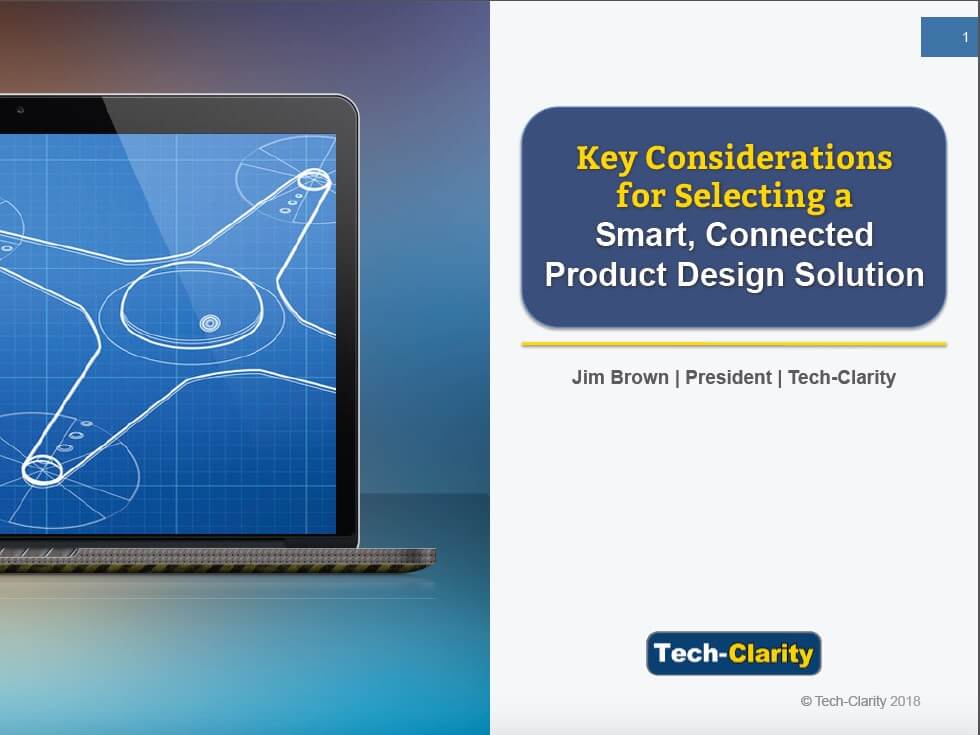 How does product design, development, and engineering need to change in order to support digital products?
Key Considerations for Selecting a Smart, Connected Product Design Solution eBook shares that today's new product development (NPD) processes simply aren't comprehensive enough to effectively design smart, connected products. What do manufacturers need to look for in their engineering software solution to support products in the IoT era and support their digital transformation? The guide shares requirements that manufacturers can use to select the best software for their needs considering functionality, selecting the right partner, and what to look for to ensure effective implementation and adoption. The eBook shares considerations for multiple aspects of the engineering process ranging from conceptual design through validation and verification.
Please enjoy the summary below*.
For the full report, please visit our sponsor PTC (no charge, registration required).
How does product design, development, and engineering need to change in order to support digital products?
Key Considerations for Selecting a Smart, Connected Product Design Solution eBook shares that today's new product development (NPD) processes simply aren't comprehensive enough to effectively design smart, connected products. What do manufacturers need to look for in their engineering software solution to support products in the IoT era and support their digital transformation? The guide shares requirements that manufacturers can use to select the best software for their needs considering functionality, selecting the right partner, and what to look for to ensure effective implementation and adoption. The eBook shares considerations for multiple aspects of the engineering process ranging from conceptual design through validation and verification.
Please enjoy the summary below*.
For the full report, please visit our sponsor PTC (no charge, registration required).
Product Development Needs to Evolve to Support Today’s Products
Manufactured products have evolved rapidly over the last decade or so. Items ranging from cars to coffee makers have transitioned from primarily mechanical things to smart, connected products that interact with other products as part of a system in a system of systems world.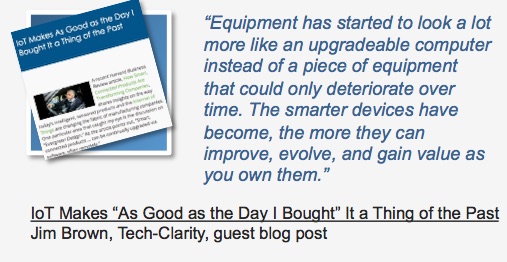 These products are much more than just a piece of equipment. They incorporate intelligence, data, and the ability to communicate with cloud and corporate software that together can be leveraged to change the customer value proposition. Some companies are even offering their products as a service (PaaS), charging for usage or output instead of the product delivering it.
Today’s new product development (NPD) processes simply aren’t comprehensive enough to effectively design smart, connected products. What needs to change? Companies need to:
These products are much more than just a piece of equipment. They incorporate intelligence, data, and the ability to communicate with cloud and corporate software that together can be leveraged to change the customer value proposition. Some companies are even offering their products as a service (PaaS), charging for usage or output instead of the product delivering it.
Today’s new product development (NPD) processes simply aren’t comprehensive enough to effectively design smart, connected products. What needs to change? Companies need to:
- Include all functional departments early in the NPD process, for example inviting corporate IT to specify cloud and enterprise system enhancements
- Change the product design process to incorporate new decisions such as where to place sensors
- Adapt the product innovation process to take advantage of new insights available from smart, connected products in the field, including actual operating conditions
Conclusions and Recommendations
It’s time for companies to make the transition to designing smart, connected products. The business benefits are compelling, and we believe that those that implement these capabilities first will put their competitors at a disadvantage. To adapt, companies need to make changes to their NPD processes and technology. They need to involve more disciplines early in the design process, include a new series of decisions in their design process, and learn from real product performance by “closing the loop” between design and operation. In order to take advantage of the digital opportunities, companies must evolve modeling, design collaboration, and simulation to support connected design including design decisions related to:
In order to take advantage of the digital opportunities, companies must evolve modeling, design collaboration, and simulation to support connected design including design decisions related to:
- Conceptual design and requirements
- Data design
- Sensor strategy
- Communication plan
- Validation and verification
It's time to act. With the move toward a sharing economy, we believe that companies that simply develop and sell products will put themselves at a significant disadvantage to companies that design, develop, and stay in touch with their products throughout the product’s life. Companies that don’t embrace digitalization and start offering more than a physical product stand the risk of being commoditized.
*This summary is an abbreviated version of the report and does not contain the full content. A link to download the full report is available above. If you have difficulty obtaining a copy of the report, please contact us using the "Contact" link below. [post_title] => Guide to Selecting a Smart, Connected Product Design Solution (eBook) [post_excerpt] => [post_status] => publish [comment_status] => open [ping_status] => open [post_password] => [post_name] => digital-product-design [to_ping] => [pinged] => [post_modified] => 2022-11-14 22:28:12 [post_modified_gmt] => 2022-11-15 03:28:12 [post_content_filtered] => [post_parent] => 0 [guid] => https://tech-clarity.com/?p=6963 [menu_order] => 0 [post_type] => post [post_mime_type] => [comment_count] => 0 [filter] => raw ) [17] => WP_Post Object ( [ID] => 6947 [post_author] => 2 [post_date] => 2018-05-29 19:09:13 [post_date_gmt] => 2018-05-29 23:09:13 [post_content] =>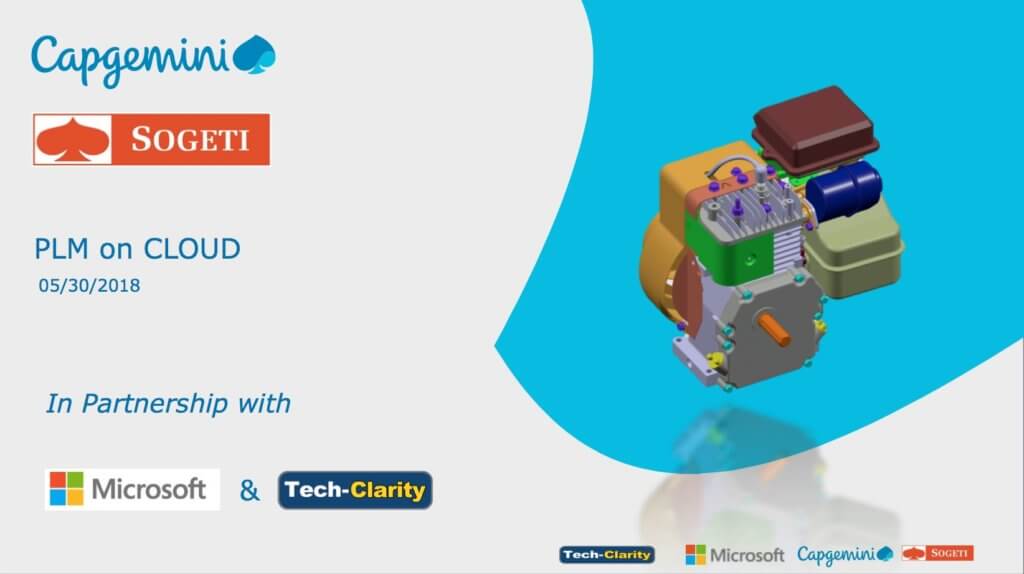 [post_title] => PLM in the Cloud Webcast with Sogeti, and Microsoft
[post_excerpt] =>
[post_status] => publish
[comment_status] => open
[ping_status] => open
[post_password] =>
[post_name] => plm-cloud-webcast-sogeti-microsoft
[to_ping] =>
[pinged] =>
[post_modified] => 2022-11-14 22:26:46
[post_modified_gmt] => 2022-11-15 03:26:46
[post_content_filtered] =>
[post_parent] => 0
[guid] => https://tech-clarity.com/?p=6947
[menu_order] => 0
[post_type] => post
[post_mime_type] =>
[comment_count] => 0
[filter] => raw
)
[18] => WP_Post Object
(
[ID] => 6937
[post_author] => 2572
[post_date] => 2018-05-16 13:13:15
[post_date_gmt] => 2018-05-16 17:13:15
[post_content] => How can retail companies improve their decisions to survive in today's complex omnichannel environment and anticipate changes in trends in a dynamic and volatile market? Can predictive retail analytics help? If so, what should retailers look for in a solution?
[post_title] => PLM in the Cloud Webcast with Sogeti, and Microsoft
[post_excerpt] =>
[post_status] => publish
[comment_status] => open
[ping_status] => open
[post_password] =>
[post_name] => plm-cloud-webcast-sogeti-microsoft
[to_ping] =>
[pinged] =>
[post_modified] => 2022-11-14 22:26:46
[post_modified_gmt] => 2022-11-15 03:26:46
[post_content_filtered] =>
[post_parent] => 0
[guid] => https://tech-clarity.com/?p=6947
[menu_order] => 0
[post_type] => post
[post_mime_type] =>
[comment_count] => 0
[filter] => raw
)
[18] => WP_Post Object
(
[ID] => 6937
[post_author] => 2572
[post_date] => 2018-05-16 13:13:15
[post_date_gmt] => 2018-05-16 17:13:15
[post_content] => How can retail companies improve their decisions to survive in today's complex omnichannel environment and anticipate changes in trends in a dynamic and volatile market? Can predictive retail analytics help? If so, what should retailers look for in a solution?
Listen to Tech-Clarity's Michelle Boucher and PTC's Brad Thomas, Product Manager of the Retail Business Unit discuss predictive analytics for the retail industry. They cover topics such as:
- The value of connecting multiple databases on a single platform
- How applying machine learning to analytics helps retail companies
- Examples of how predictive analytics solutions can help retailers
 [post_title] => Retail Analytics Solutions (webcast)
[post_excerpt] =>
[post_status] => publish
[comment_status] => open
[ping_status] => open
[post_password] =>
[post_name] => retail-analytics-solutions-webcast
[to_ping] =>
[pinged] =>
[post_modified] => 2022-11-14 22:26:57
[post_modified_gmt] => 2022-11-15 03:26:57
[post_content_filtered] =>
[post_parent] => 0
[guid] => https://tech-clarity.com/?p=6937
[menu_order] => 0
[post_type] => post
[post_mime_type] =>
[comment_count] => 0
[filter] => raw
)
[19] => WP_Post Object
(
[ID] => 6926
[post_author] => 2
[post_date] => 2018-05-11 14:00:31
[post_date_gmt] => 2018-05-11 18:00:31
[post_content] => How can manufacturers get more value from their digital initiatives by leveraging the Internet of Things (IoT)? Manufacturers who embrace digitalization gain increased agility, innovation, speed, quality, and profitability in design, development, manufacturing, and the service lifecycle. One of the key enablers of these improvements is establishing a closer connection between product models and how physical products operate in the field. The digital twin leverages detailed 3D models, IoT data, and analytics to significantly change the relationship manufacturers have with their products and their customers, driving new sources of value for both.
In this Engineering.com webinar sponsored by Siemens PLM, Tech-Clarity's Jim Brown will explore how companies that embrace digitalization and the digital twin will displace competitors who stick with the status quo.
[post_title] => Retail Analytics Solutions (webcast)
[post_excerpt] =>
[post_status] => publish
[comment_status] => open
[ping_status] => open
[post_password] =>
[post_name] => retail-analytics-solutions-webcast
[to_ping] =>
[pinged] =>
[post_modified] => 2022-11-14 22:26:57
[post_modified_gmt] => 2022-11-15 03:26:57
[post_content_filtered] =>
[post_parent] => 0
[guid] => https://tech-clarity.com/?p=6937
[menu_order] => 0
[post_type] => post
[post_mime_type] =>
[comment_count] => 0
[filter] => raw
)
[19] => WP_Post Object
(
[ID] => 6926
[post_author] => 2
[post_date] => 2018-05-11 14:00:31
[post_date_gmt] => 2018-05-11 18:00:31
[post_content] => How can manufacturers get more value from their digital initiatives by leveraging the Internet of Things (IoT)? Manufacturers who embrace digitalization gain increased agility, innovation, speed, quality, and profitability in design, development, manufacturing, and the service lifecycle. One of the key enablers of these improvements is establishing a closer connection between product models and how physical products operate in the field. The digital twin leverages detailed 3D models, IoT data, and analytics to significantly change the relationship manufacturers have with their products and their customers, driving new sources of value for both.
In this Engineering.com webinar sponsored by Siemens PLM, Tech-Clarity's Jim Brown will explore how companies that embrace digitalization and the digital twin will displace competitors who stick with the status quo.
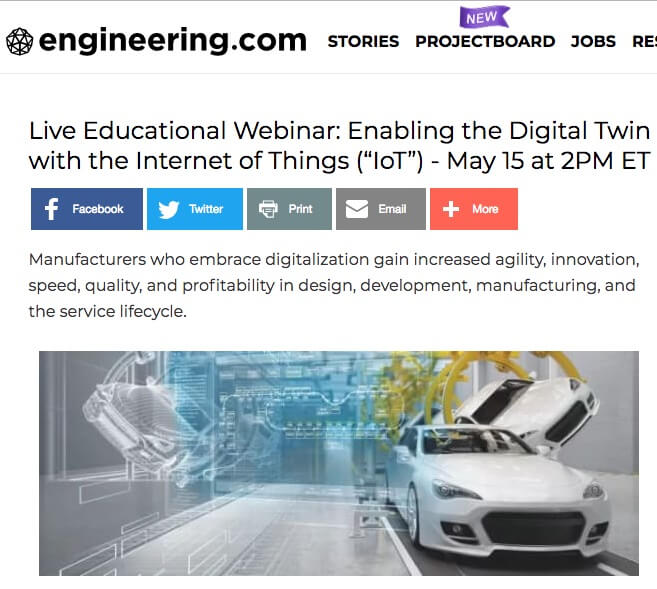 Key takeaways include:
Key takeaways include:
- How a digital twin helps create competitive differentiation
- How manufacturers can transform product performance and service through better product insights
- How a digital innovation platform supports the digital twin
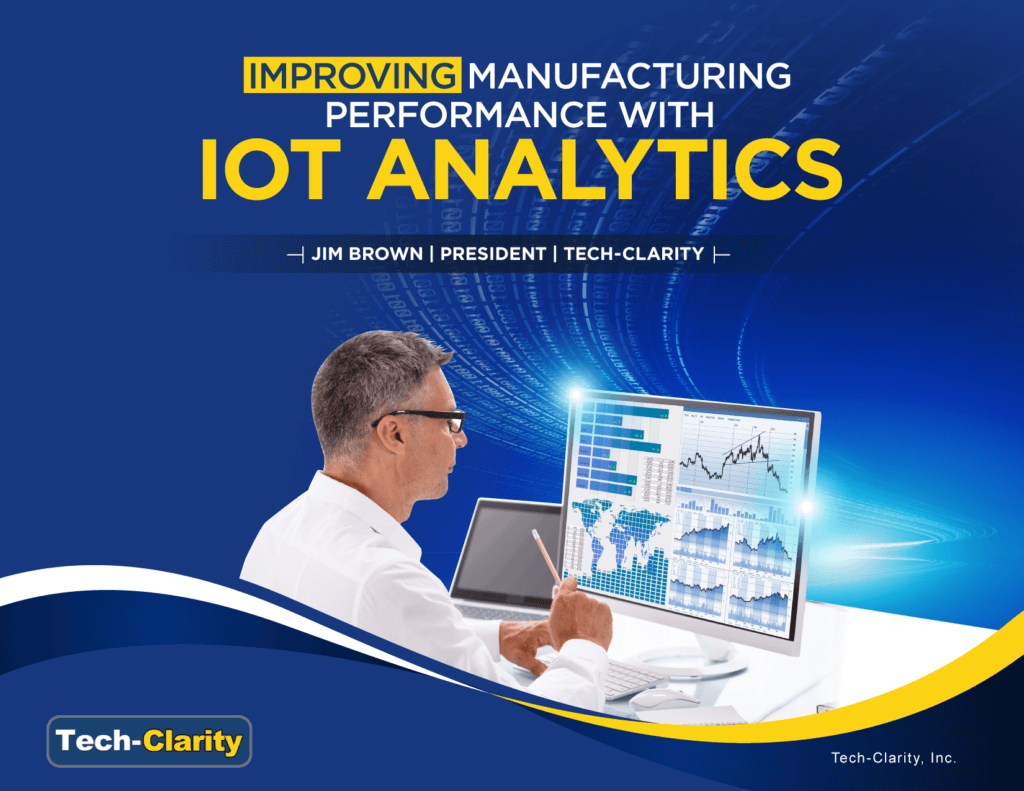 How can manufacturers improve OEE with IoT Analytics? How can they leverage IoT and IIoT data to drive higher performance and extend the advantages they've gained from Six Sigma and other productivity improvement programs? Improving Manufacturing Performance with IoT Analytics takes a look at how to improve Operational Equipment Effectiveness through digitalization. Specifically, the report looks at how analytics can help reduce the Six Big Losses of OEE.
Please enjoy the summary below (no charge, no registration required).
For the full report, please visit our sponsor PTC (no charge, registration required).
How can manufacturers improve OEE with IoT Analytics? How can they leverage IoT and IIoT data to drive higher performance and extend the advantages they've gained from Six Sigma and other productivity improvement programs? Improving Manufacturing Performance with IoT Analytics takes a look at how to improve Operational Equipment Effectiveness through digitalization. Specifically, the report looks at how analytics can help reduce the Six Big Losses of OEE.
Please enjoy the summary below (no charge, no registration required).
For the full report, please visit our sponsor PTC (no charge, registration required).
Improving Productivity Through Digitalization
The Strategic Importance of Digitalization Digitalization is changing the landscape in manufacturing as companies adopt Industry 4.0, Smart Manufacturing, and Digital Transformation initiatives. In fact, a recent Tech-Clarity survey shows that over one-half of manufacturers believe that digitalization / digital transformation initiatives are “important” if not “critical” to achieving their business strategy. The Internet of Things (IoT) is a critical component of digitalization in the plant, helping companies connect with production assets to better monitor how they perform. Beyond gathering data, manufacturers can leverage advanced analytics to gain real intelligence about plants and production to improve operations, driver higher performance, and guide continuous improvement.
The Internet of Things (IoT) is a critical component of digitalization in the plant, helping companies connect with production assets to better monitor how they perform. Beyond gathering data, manufacturers can leverage advanced analytics to gain real intelligence about plants and production to improve operations, driver higher performance, and guide continuous improvement.
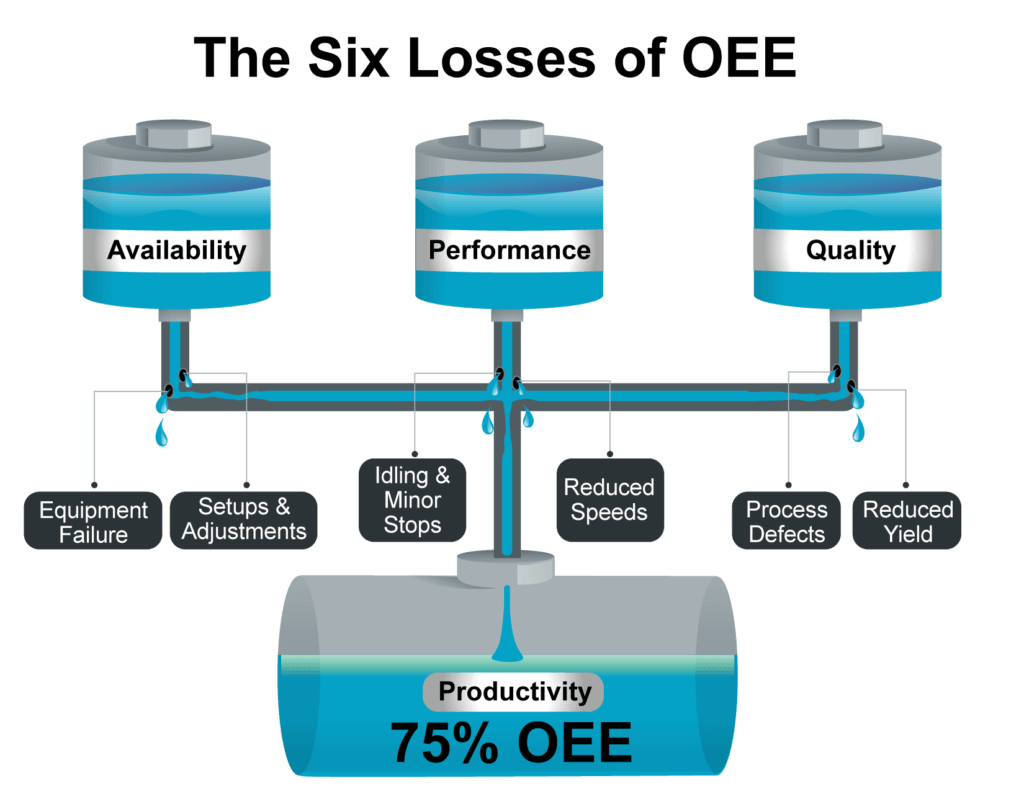 Justifying IoT Analytics Investments
For some companies, leveraging the Industrial IoT (IIoT) is simply a strategic “must do.” For others, they have to cost justify it. This eBook offers a framework to develop an ROI for IoT investments using a common manufacturing metric, Overall Equipment Effectiveness (OEE).
Analyzing improvement potential by OEE allows companies to determine potential savings in the context of the plant. The framework shows how companies can use the IoT and analytics to reduce the “Six Big Losses of OEE” and tangibly improve the three components of OEE – Availability, Performance, and Quality. Manufacturers can compare these improvement opportunities to the investment required to achieve them in order to calculate an ROI.
Justifying IoT Analytics Investments
For some companies, leveraging the Industrial IoT (IIoT) is simply a strategic “must do.” For others, they have to cost justify it. This eBook offers a framework to develop an ROI for IoT investments using a common manufacturing metric, Overall Equipment Effectiveness (OEE).
Analyzing improvement potential by OEE allows companies to determine potential savings in the context of the plant. The framework shows how companies can use the IoT and analytics to reduce the “Six Big Losses of OEE” and tangibly improve the three components of OEE – Availability, Performance, and Quality. Manufacturers can compare these improvement opportunities to the investment required to achieve them in order to calculate an ROI.
Next Steps – Getting Started
Develop Your IoT Analytics ROI Using The OEE Framework Whether you’re trying to grow OEE from the middle of the pack or trying to eek out additional improvements to continuously approach 100%, IoT analytics is a very good option. Companies can use the framework in this eBook to estimate the business value of an IoT analytics initiative based on research and case studies, tailoring the assumptions to fit their business and adding costs to develop an ROI and justify their efforts. Start Small and Expand Of course it’s important that companies recognize that they should start small, gain tangible value, and create a foundation to expand on. Early projects should be valuable and measurable with tangible business results, not just technical proofs of concept. They should identify and prioritize opportunities in the plant based on the ability to improve OEE. For example, they can use IoT analytics reduce equipment downtime for a problem workcell or improve yield for a challenging product. At the same time, they should keep costs low and set the foundation for the future by using a scalable, platform-based approach. Get Started It’s time to improve productivity by reducing the 6 Big Losses of OEE and driving improvements to Availability, Performance, and Quality. Pick a project and scale up the value by extending to new products, production lines, plants, or geographies. It’s time for manufacturing to drive meaningful change with IoT analytics and set the stage for future improvements beyond the plant. Remember, a small improvement to OEE can drive significant bottom line results, and the foundation created by Manufacturing can open up new business models and revenue opportunities across the business. *This summary is an abbreviated version of the report and does not contain the full content. A link to download the full report is available above. If you have difficulty obtaining a copy of the report, please contact us using the "Contact" link below. [post_title] => Improving Manufacturing Performance with IoT Analytics (eBook) [post_excerpt] => [post_status] => publish [comment_status] => open [ping_status] => open [post_password] => [post_name] => iot-analytics [to_ping] => [pinged] => [post_modified] => 2022-11-14 22:28:13 [post_modified_gmt] => 2022-11-15 03:28:13 [post_content_filtered] => [post_parent] => 0 [guid] => https://tech-clarity.com/?p=7279 [menu_order] => 0 [post_type] => post [post_mime_type] => [comment_count] => 0 [filter] => raw ) [comment_count] => 0 [current_comment] => -1 [found_posts] => 802 [max_num_pages] => 41 [max_num_comment_pages] => 0 [is_single] => [is_preview] => [is_page] => [is_archive] => [is_date] => [is_year] => [is_month] => [is_day] => [is_time] => [is_author] => [is_category] => [is_tag] => [is_tax] => [is_search] => [is_feed] => [is_comment_feed] => [is_trackback] => [is_home] => 1 [is_privacy_policy] => [is_404] => [is_embed] => [is_paged] => [is_admin] => [is_attachment] => [is_singular] => [is_robots] => [is_favicon] => [is_posts_page] => [is_post_type_archive] => [query_vars_hash:WP_Query:private] => 4c01c02478b94be7882c6682551bfbac [query_vars_changed:WP_Query:private] => 1 [thumbnails_cached] => [allow_query_attachment_by_filename:protected] => [stopwords:WP_Query:private] => [compat_fields:WP_Query:private] => Array ( [0] => query_vars_hash [1] => query_vars_changed ) [compat_methods:WP_Query:private] => Array ( [0] => init_query_flags [1] => parse_tax_query ) [query_cache_key:WP_Query:private] => wp_query:8edebf906472a926233780d3b30b45c4:0.89253100 17646572420.90173500 1764657242 )All Results for "All"
Closing the Engineering Skills Gap (webcast)
How can you strengthen your engineering team with new hires who have the required engineering skills to quickly become productive members of the team? Hear from Tech-Clarity’s Michelle Boucher and Dora Smith, Senior Director of Siemens PLM’s Global Academic Program, as they discuss the required skills for new engineering graduates to be successful on today’s…
Five Ways to get More Value from your PLM System (webcast)
How can manufacturers expand their PLM implementation to get more value from their Product Lifecycle Management system? Join this webcast to hear Jim Brown shares his perspective and research, including interviews with two manufacturers that have gone beyond their initial PLM footprint. Implementing PLM successfully is more of a journey than a destination. In a recent…
Industry Analyst Discussion on Siemens PLM Strategy Conference (video)
What do leading industry analysts think about Siemens PLM strategy and execution? Industry analyst Allan Behrens of Taxal hosted a discussion about Siemens PLM with two other analysts, Monica Schnitger of Schnitger Corp and Tech-Clarity’s Jim Brown. The Disruptive presentation was a unique glimpse at industry watchers (trying not to call ourselves “experts”) sharing our key…
Sixth Annual Product Portfolio Management Benchmark Study
Tech-Clarity was commissioned by Planview to conduct their 6th Annual Product Portfolio Management Benchmark Survey, titled The Business Transformation Required to Innovate in the Digital Era. The survey evaluated trends in managing product portfolios including challenges, processes, and technologies used to make portfolio decisions. Tech-Clarity applied our performance banding methodology to determine what Top Performers…
The CAD Interoperability Survival Guide (eBook)
How can manufacturers survive when they can’t consolidate on a single CAD format? Is that even a possibility? Given the unavoidable reality of multi-CAD, let’s see if there’s a better way to manage the mayhem without spending so much non-value-added time. This eBook shares our perspective on the most practical way to manage designs created…
Translating Digital Buzzwords to Real Value for Medical Devices (post)
Tech-Clarity research shows that the majority of manufacturers believe that digitalization is important or critical to achieving their business strategy (see figure). Over one-third say that it’s critical. Digitalization in medical device design and manufacturing has significant promise, but what does it actually mean? Medical device companies, already struggling with how to address critical initiatives…
IoT Equipment Health Monitoring (webcast)
How can manufacturers and service providers drive additional productivity and profitability by developing equipment intelligence by monitoring equipment health? Learn how the IIoT, edge computing, and analytics help companies predict and mitigate equipment issues before they disrupt production. Manufacturers can now identify trends and data relationships that previously went undiscovered by combining data from multiple…
Improving Service with IoT Remote Monitoring (Buyer’s Guide)
How can companies improve service and gain tangible ROI by remotely monitoring equipment using the IoT? This buyer’s guide offers practical advice for companies starting their remote monitoring journey to transform the way they service their equipment whether it’s on site, in the field, or at a customer location. At the same time, it offers recommendations to…
How Digital Chemical Labs Drive Innovation (infographic)
How do Top Performers in the chemical industry leverage digitalization in the chemical lab to overcome their innovation struggles? A Tech-Clarity survey shows that chemical companies face a myriad of innovation-related challenges including cost pressure, sustainability, more customer-driven products, and specialized / performance materials. This infographic provides a graphical snapshot of the research sharing that…
Five Things Top Performers Do Differently to Deliver Profitable, Innovative Products (PPM survey results)
How can companies manage their portfolios and product development processes in order to more reliably hit their product innovation and commercialization challenges? How does digital transformation raise the bar on product portfolio management? Tech-Clarity was commissioned by Planview, Inc. to conduct their Sixth Product Portfolio Management Benchmark Study to find out. The research uncovered five…
The CAD Interoperability Survival Guide (webcast)
How can engineers be productive and innovate when suppliers, customers, other departments, and even different design teams use a variety of CAD tools? This webcast shares how CAD interoperability helps companies survive when multi-CAD is simply the reality they live with every day. The webinar shares customer stories and best practices from our recent eBook…
Aerospace and Defense Adopting Cloud Innovation Platforms (survey results)
How can Aerospace and Defense companies leverage the cloud to improve innovation, engineering, and manufacturing across the product lifecycle? We surveyed over 250 companies and analyzed the progress, plans, and success factors for supporting product innovation with cloud solutions of over 70 of these companies that serve the A&D industry. The research analyzes both challenges…
The Digital Chemical Lab (survey results, white paper)
How can companies improve business results by increasing the digital maturity in their chemical labs? The Digital Chemical Lab, Top Performers Digitalizing Their Chemical Laboratories, shares insights from a survey of over 170 chemical companies examining their lab processes, data, solutions, and digital maturity. The survey benchmarks the level of digitalization against business performance, finding…
Secrets to Delivering Smart, Connected Product Portfolios (webcast)
How do top performing companies plan and deliver profitable portfolios of smarter, more connected products? Join this webcast to hear what recent survey results tell us about developing innovative products in the digital age. The webcast includes results from the 6th Product Portfolio Management Benchmark study, conducted by Tech-Clarity and sponsored by Planview. Hear Tech-Clarity’s Jim…
Bridging the Gap Between Engineering and Purchasing
How can manufacturers bridge the knowledge gap between design and procurement? The Manufacturer’s Guide to Bridging the Engineering-Purchasing Gap shares our perspective on how manufacturers can take a digital approach to sharing critical BOM data from Engineering with Purchasing so they can reduce cost, improve efficiency, and prevent late shipments due to part shortages. Please…
Guide to Selecting a Smart, Connected Product Design Solution (eBook)
How does product design, development, and engineering need to change in order to support digital products? Key Considerations for Selecting a Smart, Connected Product Design Solution eBook shares that today’s new product development (NPD) processes simply aren’t comprehensive enough to effectively design smart, connected products. What do manufacturers need to look for in their engineering…
PLM in the Cloud Webcast with Sogeti, and Microsoft
PLM helps manufacturers improve innovation and product development performance through streamlined processes, centralized data, and integrated tools. It’s a key part of any manufacturer’s digitalization strategy. Learn how manufacturers are leveraging the cloud to remove the barriers to achieving the strategic benefits of Product Lifecycle Management. Join an interesting panel discussion between Tech-Clarity, Sogeti, and…
Retail Analytics Solutions (webcast)
How can retail companies improve their decisions to survive in today’s complex omnichannel environment and anticipate changes in trends in a dynamic and volatile market? Can predictive retail analytics help? If so, what should retailers look for in a solution? Listen to Tech-Clarity’s Michelle Boucher and PTC’s Brad Thomas, Product Manager of the Retail Business…
Enabling the Digital Twin with IoT (webcast)
How can manufacturers get more value from their digital initiatives by leveraging the Internet of Things (IoT)? Manufacturers who embrace digitalization gain increased agility, innovation, speed, quality, and profitability in design, development, manufacturing, and the service lifecycle. One of the key enablers of these improvements is establishing a closer connection between product models and how…
 Hear from
Hear from